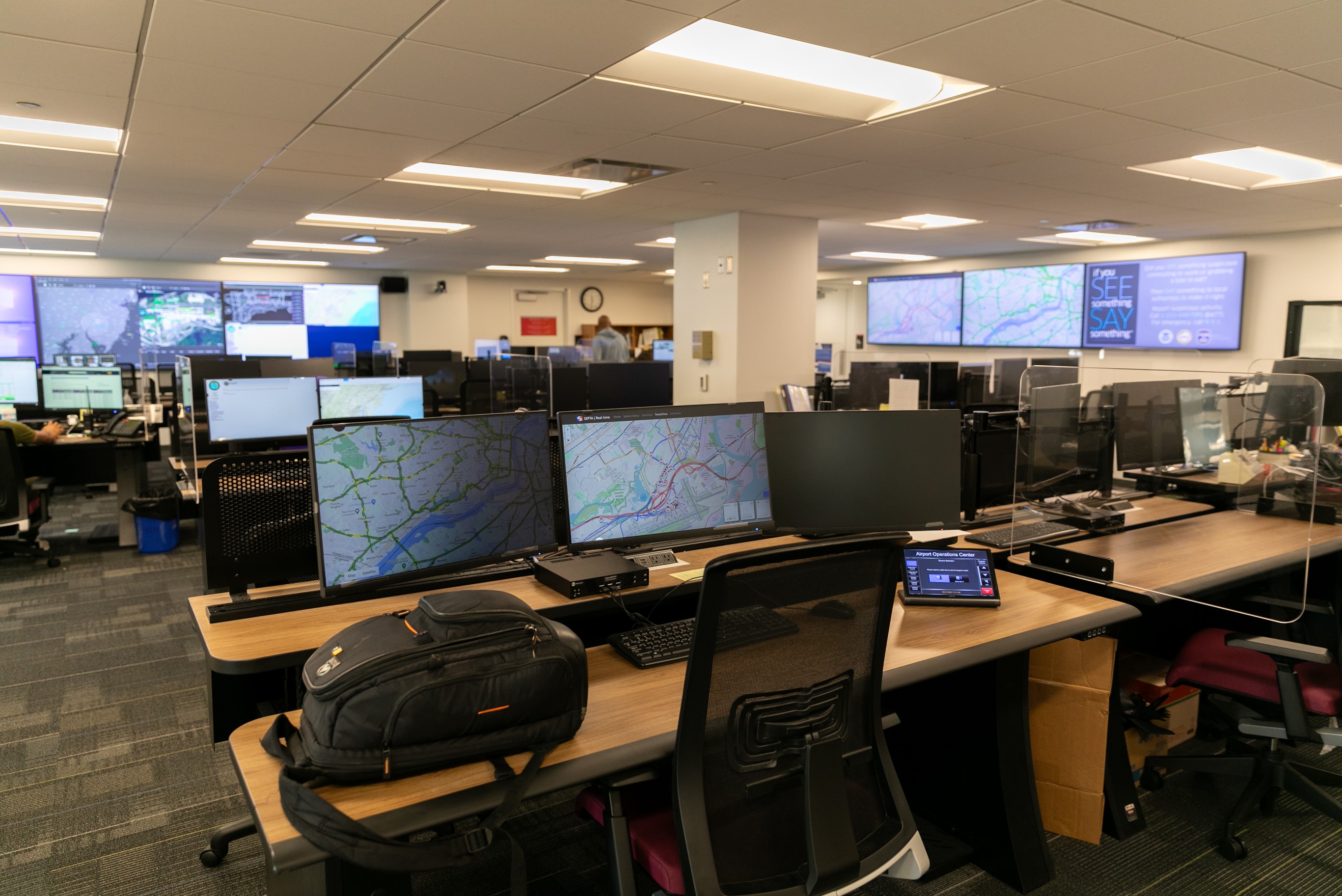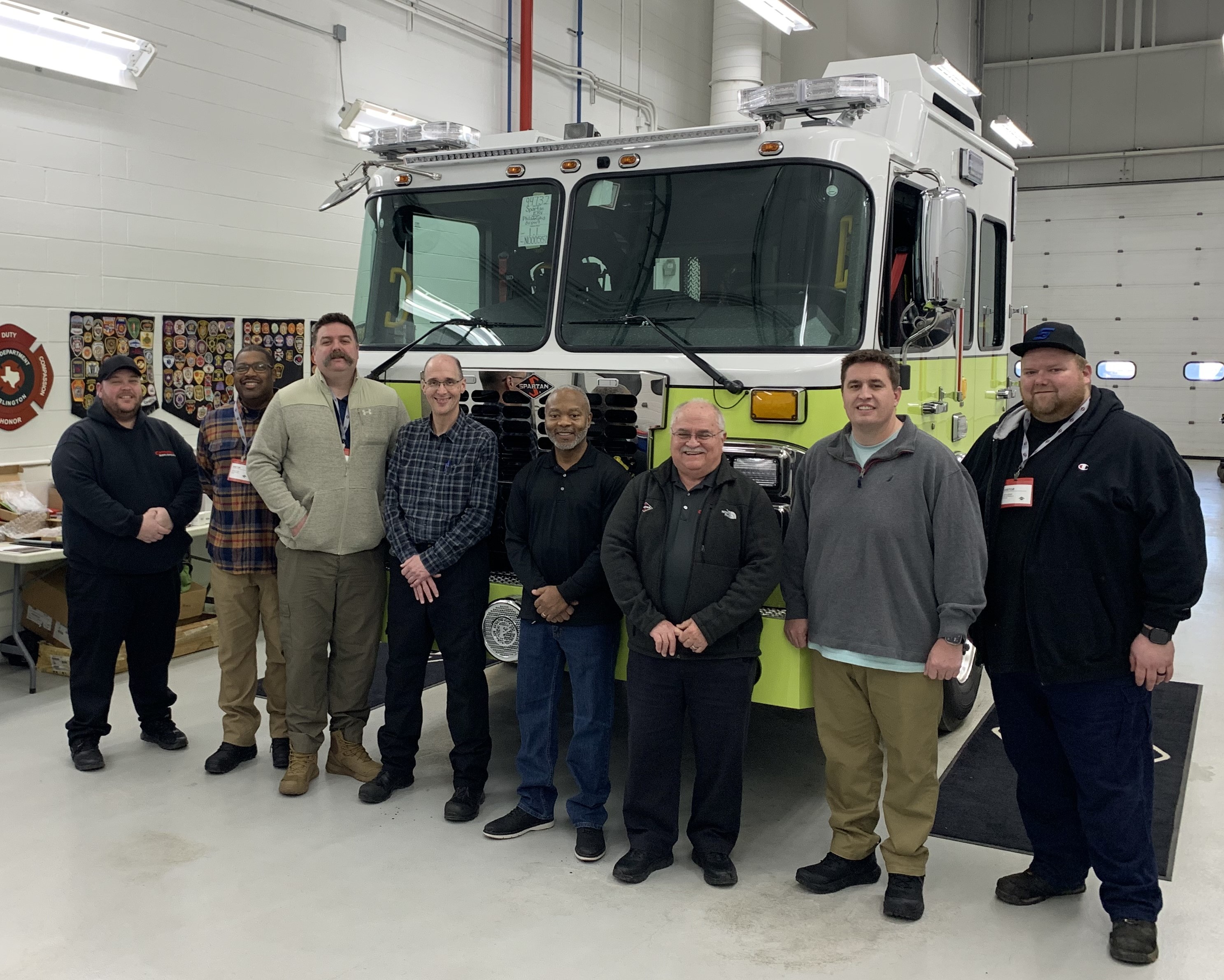
PHILADELPHIA- The Transportation Security Administration (TSA), in collaboration Philadelphia International Airport (PHL), will temporarily close the Terminal A-West and Terminal F security checkpoints beginning Wednesday, November 5. The temporary closure of these checkpoints will provide optimal operations at the Terminals A-East, B, C and D/E checkpoints.
As of March 27, 2025 Philadelphia International Airport (PHL) implemented the Authorized Signer Portal, a new online system designed to expedite the airport badging process by replacing traditional paper applications with a fully digital process.
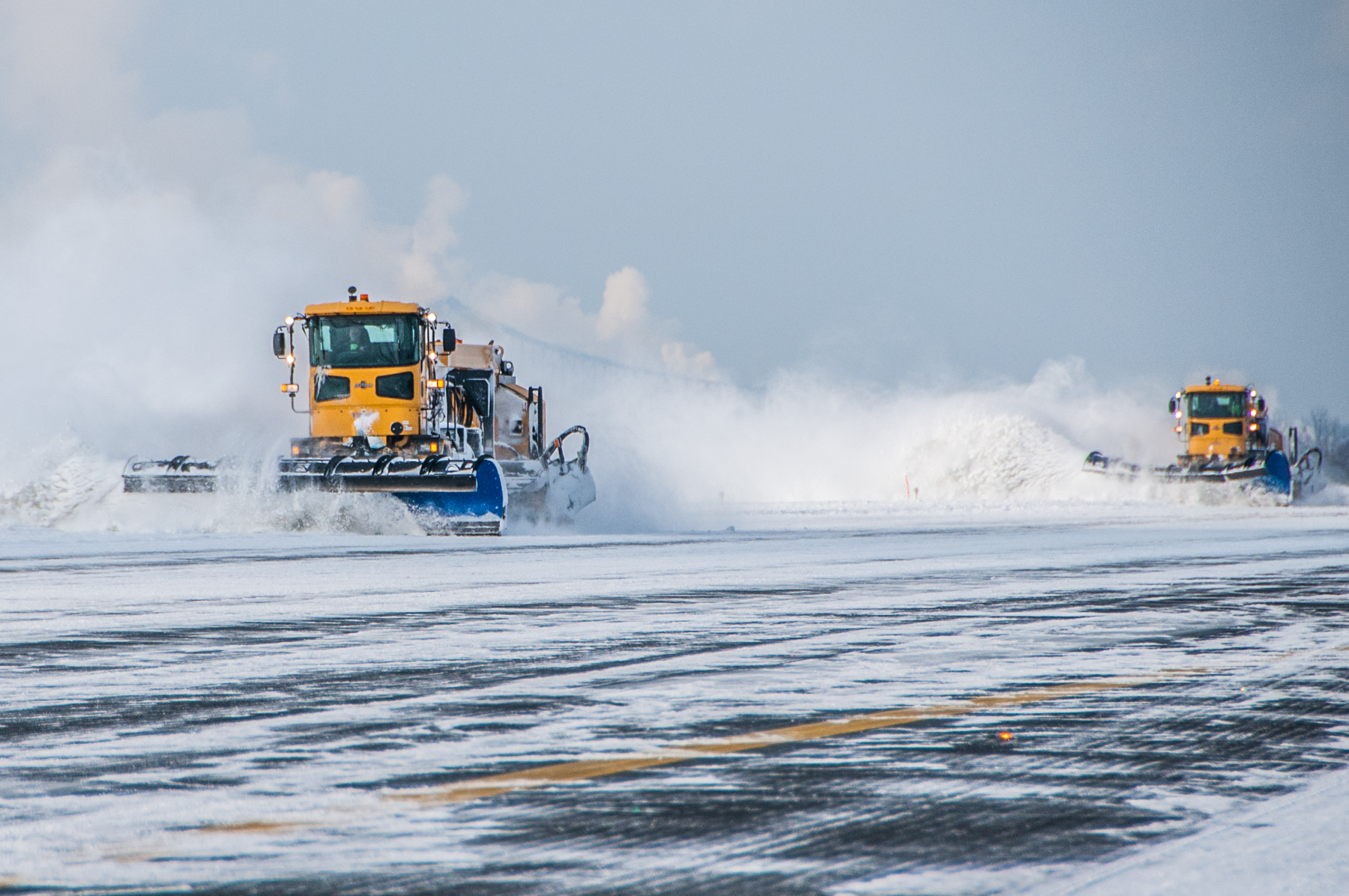
Whether it be a light dusting or a full-on blizzard, even just a few flakes can disrupt air travel. City of Philadelphia Department of Aviation Crews are prepared to battle the snow, sleet, slush and ice by releasing the… “Snow Jawn” and an army of plows, jet brooms and runway deicing trucks at Philadelphia International Airport (PHL) and Northeast Philadelphia Airport (PNE).
In firefighting, staying up to date with the latest equipment is essential for ensuring safety and efficiency during operations. At Fire Station Engine 78, located at Philadelphia International Airport, staff undergo a thorough training process whenever new equipment is introduced. This was the case with the recent acquisition of advanced fire trucks Foxtrot 7 and Foxtrot 10.
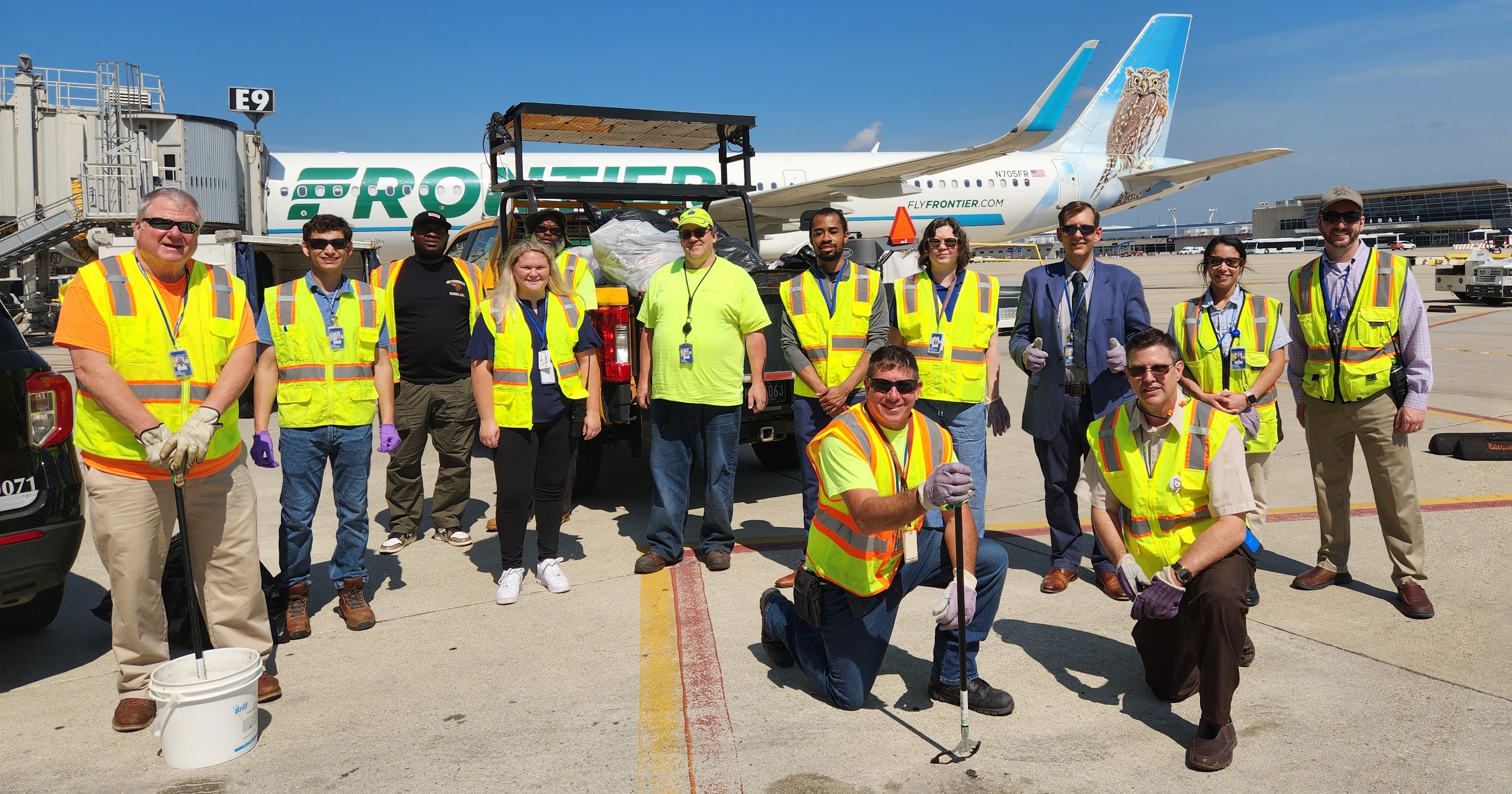
As part of its ongoing commitment to maintaining a safe and clean environment, Philadelphia International Airport (PHL) conducted two Foreign Object Debris (FOD) walks during the first two weeks of June, on the airfield at Terminals D and E.
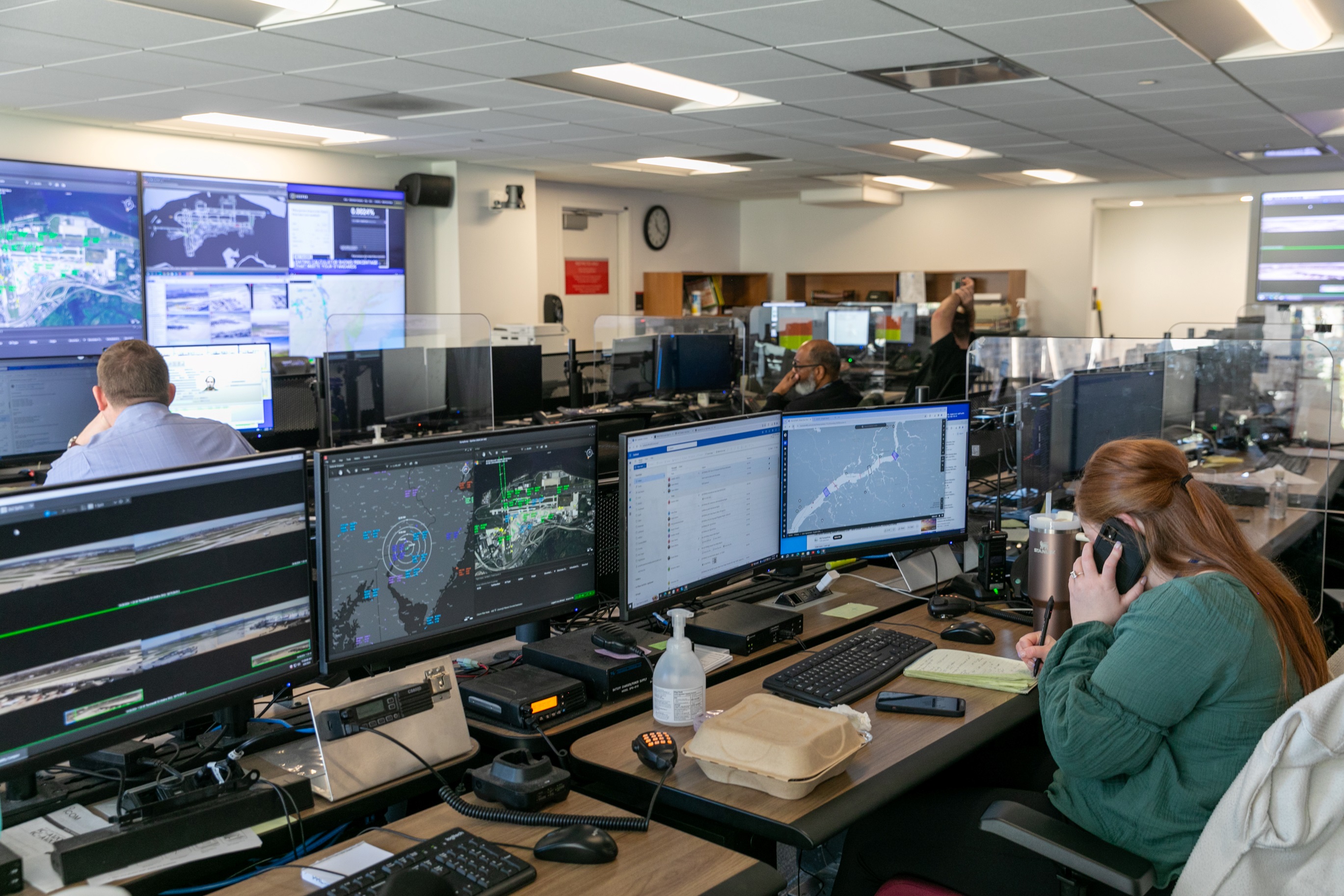
Philadelphia International Airport (PHL) recently marked a significant milestone with the grand opening of its new Airport Operations Center (AOC), the state-of-the-art facility that replaced the former Communications Center at Terminal C.
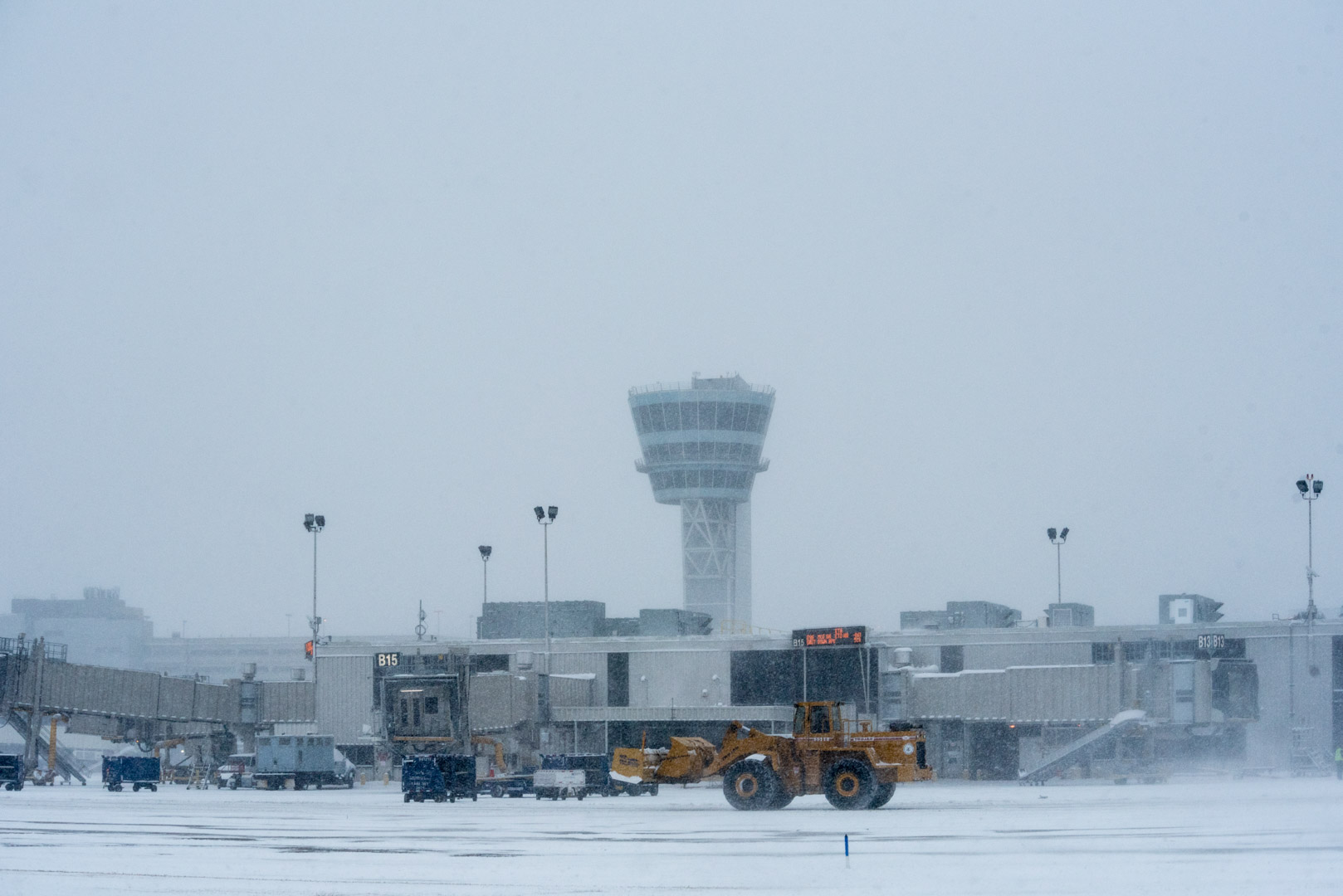
The Department of Aviation’s winter preparation process begins at the end of September. The first task is making sure that the airports' FAA documents are up-to-date. Together with the training unit, Compliance Training Superintendent John Glass will go over the documents to ensure that the training guidelines and guidance sheet for the other departments are current and that any necessary changes have been made.
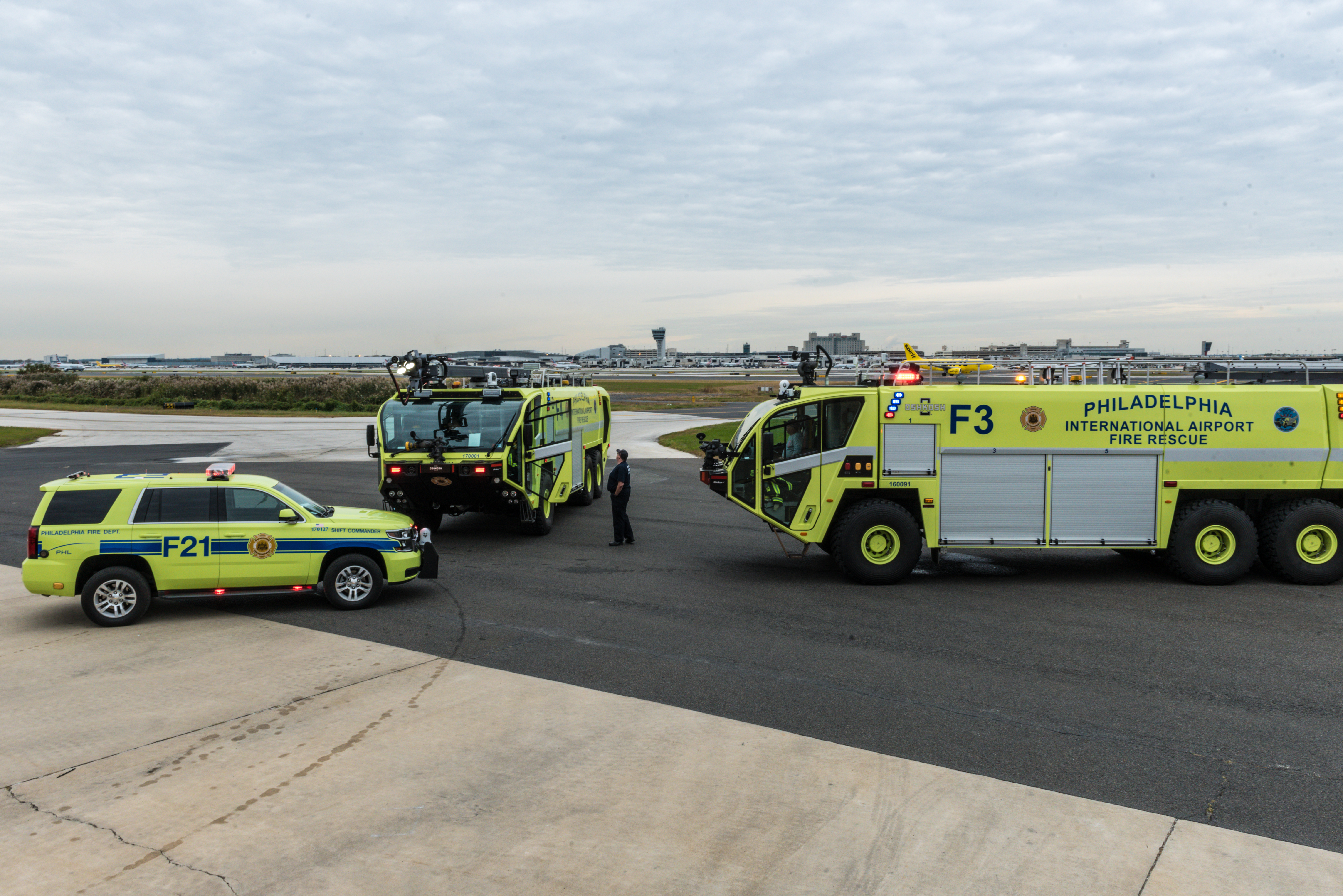
The Philadelphia Fire Department’s Engine 78 (E78) is the Aircraft Rescue Firefighting unit (ARFF) located at Philadelphia International Airport (PHL). To ensure the safety of the airport and aircraft, the Engine 78 team is always ready to fight the flames, respond to medical emergencies, and educate the public about their mission.
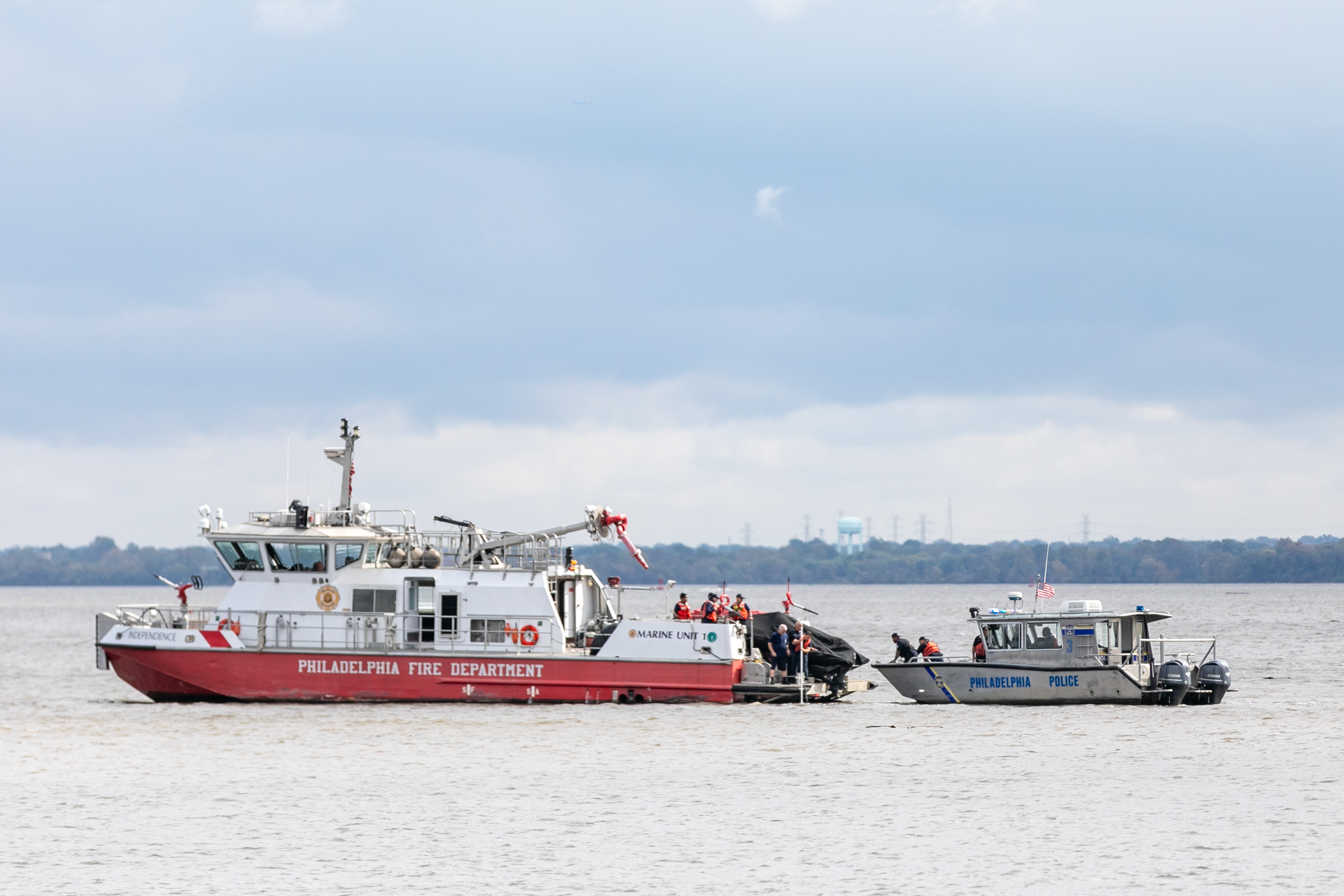
Philadelphia International Airport (PHL) experienced a fast-moving thunderstorm.
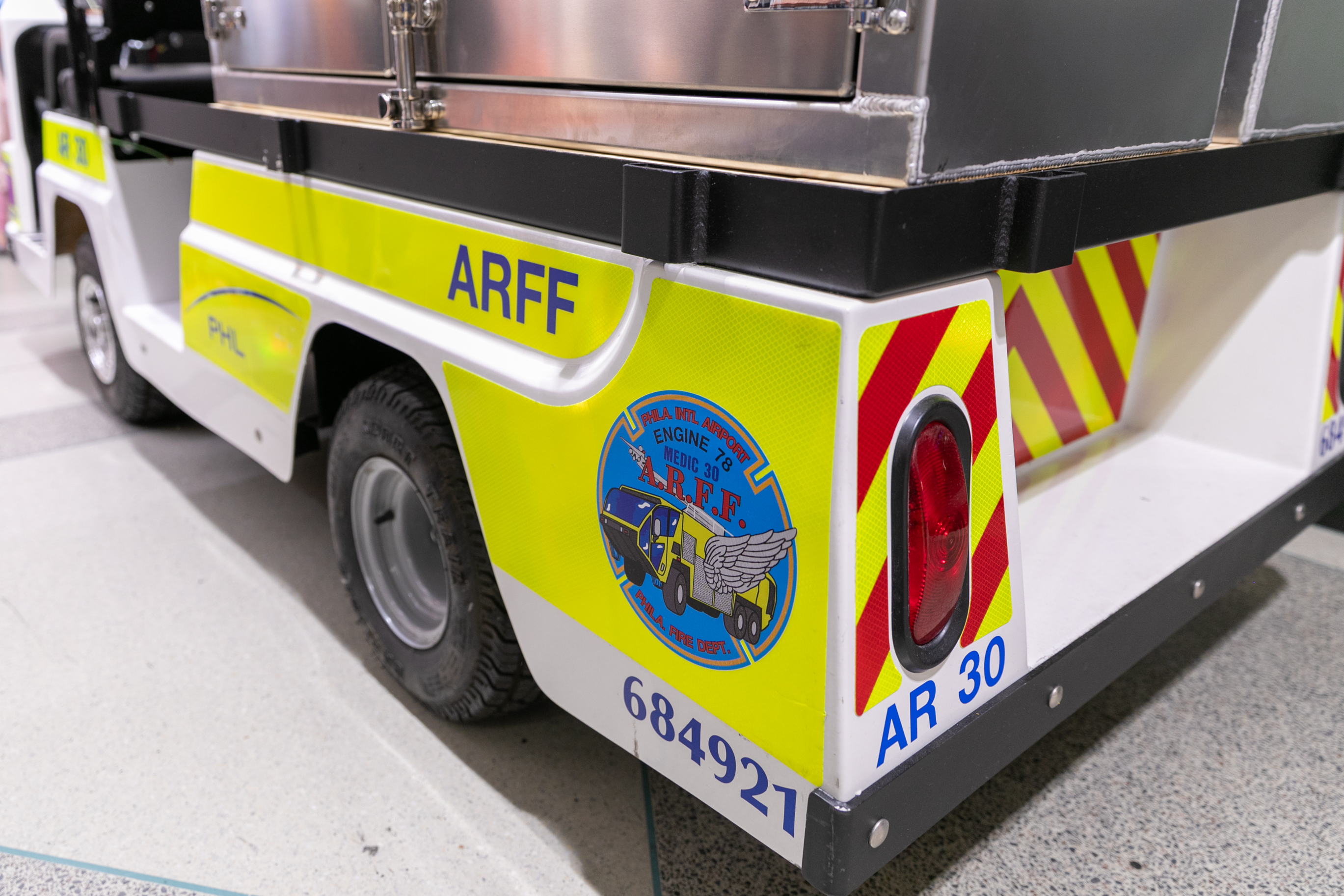
The Philadelphia Fire Department’s (PFD) newest Alternative Response Unit – known as AR30 – recently went into service at Philadelphia International Airport (PHL). This pilot program stations emergency medical personnel in the airport terminal to provide a quick response to passengers and employees who need immediate medical attention.
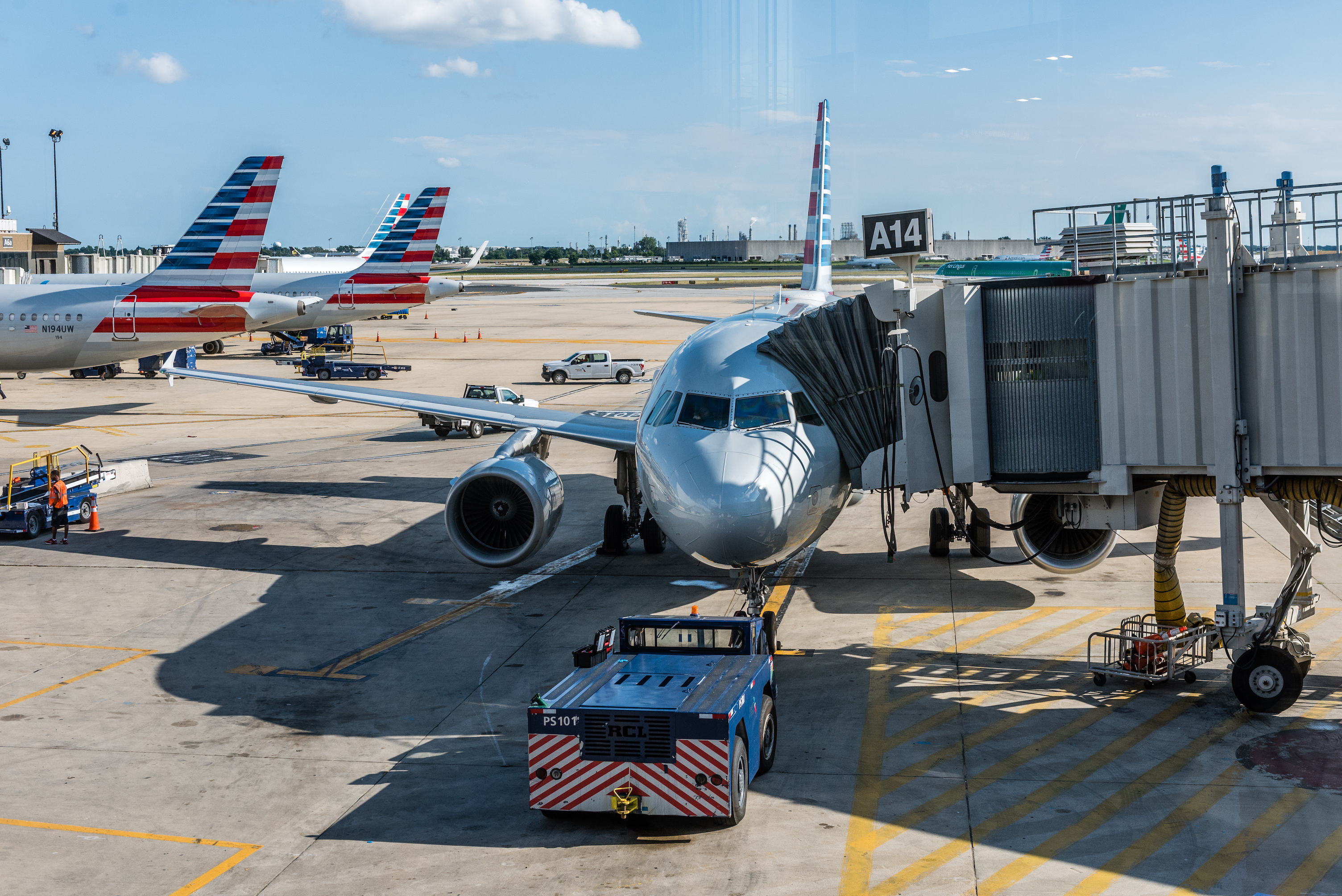
Have you ever wondered what happens to the plane at the gate either after it arrives or prepares for take-off? There is a series of orchestrated events.
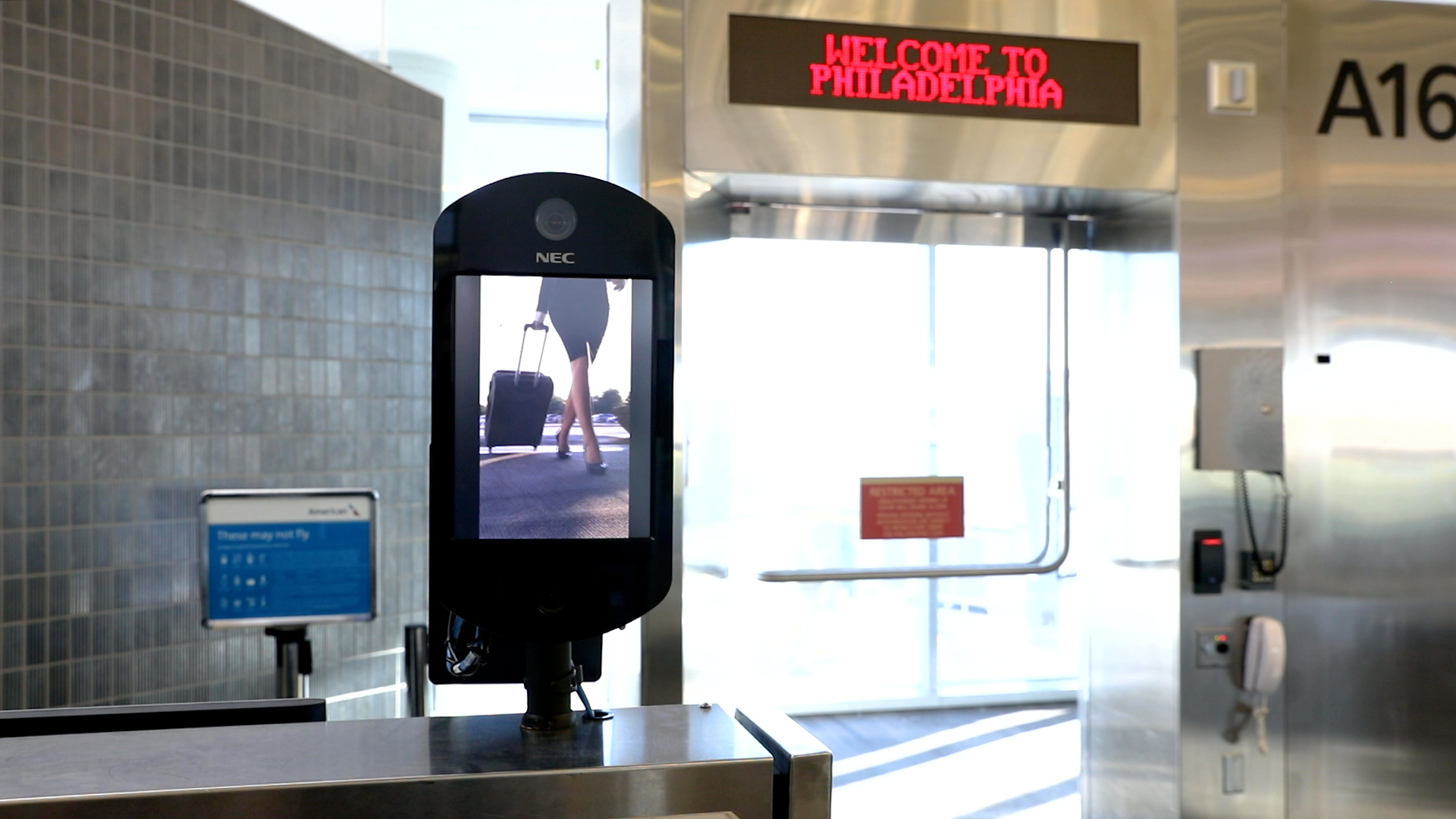
At Philadelphia International Airport (PHL), the future of secure and efficient travel is already here, thanks to the successful implementation of a state-of-the-art biometric screening technology at 25 gates across Terminal A. As one of the first airports in the United States to adopt this technology mandated by U.S.
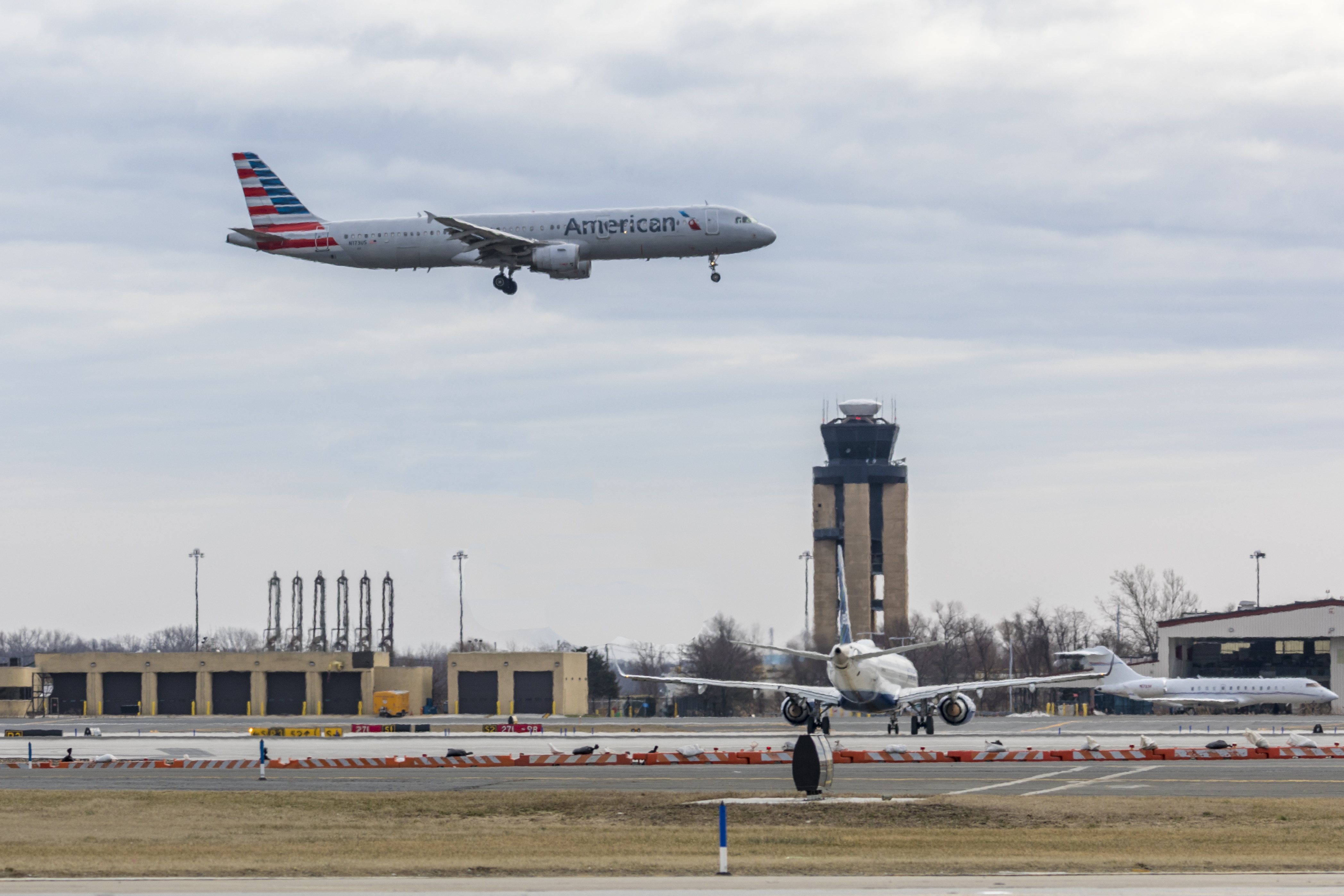
Have you ever wondered why you’re ready for take-off and your aircraft isn't leaving? The plane is ready for departure, the weather is nice, other planes are leaving, but your flight is delayed. It’s most likely due to a ground stop (GS).

Ever wonder how your flight is guided? There are hundreds of planes in the sky at any given moment and each one is closely monitored throughout its flight to ensure safety.

The winter of 2022-23 has been very mild in Philadelphia- as of publication, there have not been any winter storms with accumulated snow. There was no need to prepare the plow vehicles or to have the aircraft defrosted because of icy conditions. So, what does that mean for PHL, a northeastern airport accustomed to preparing for snow? How does a snowless winter affect the way the airport prepares for inclement weather?
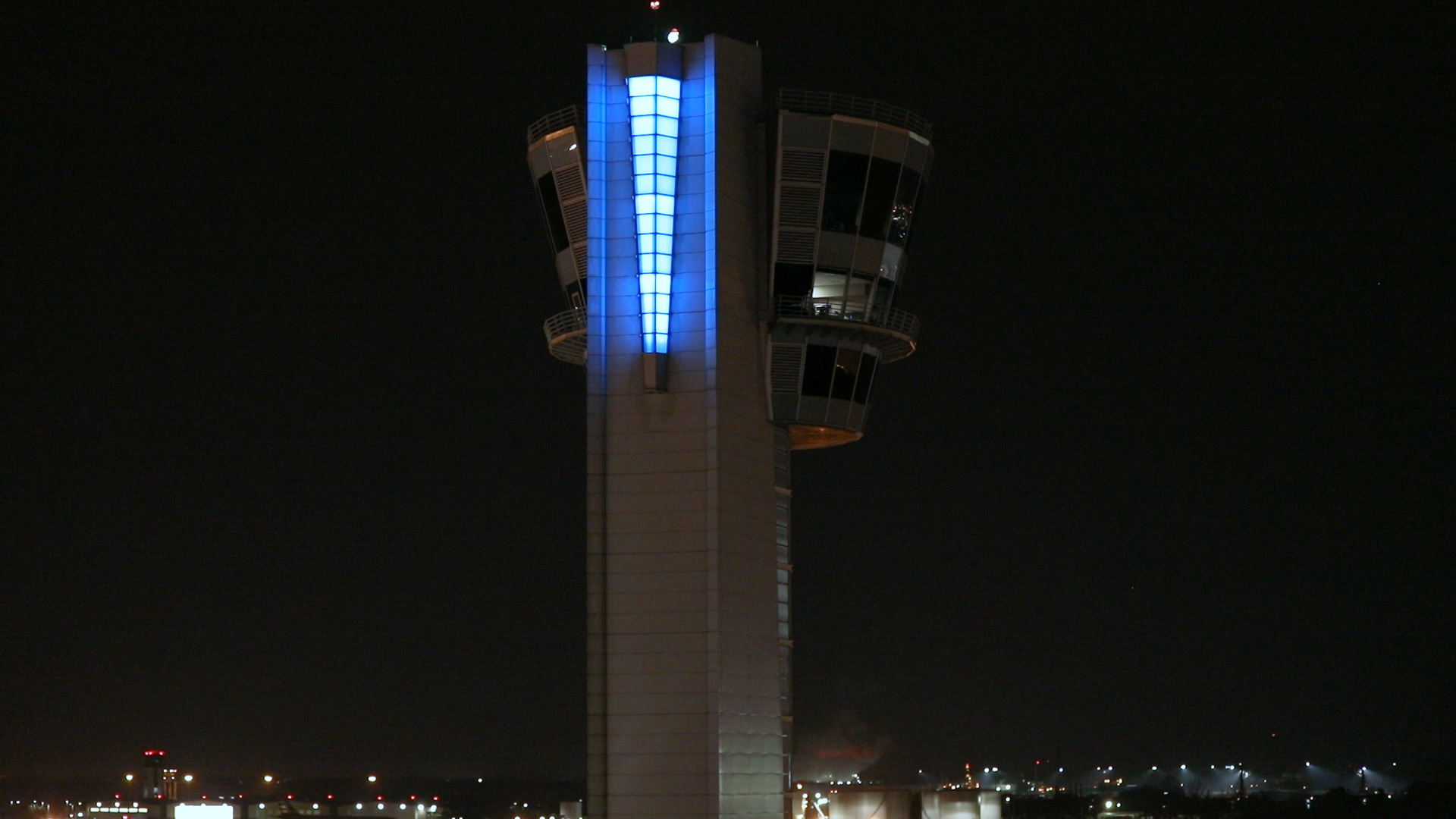
Throughout the month of January and in recognition of the importance of the topic, Philadelphia International Airport (PHL) and its partners are promoting awareness of prevention of human trafficking.
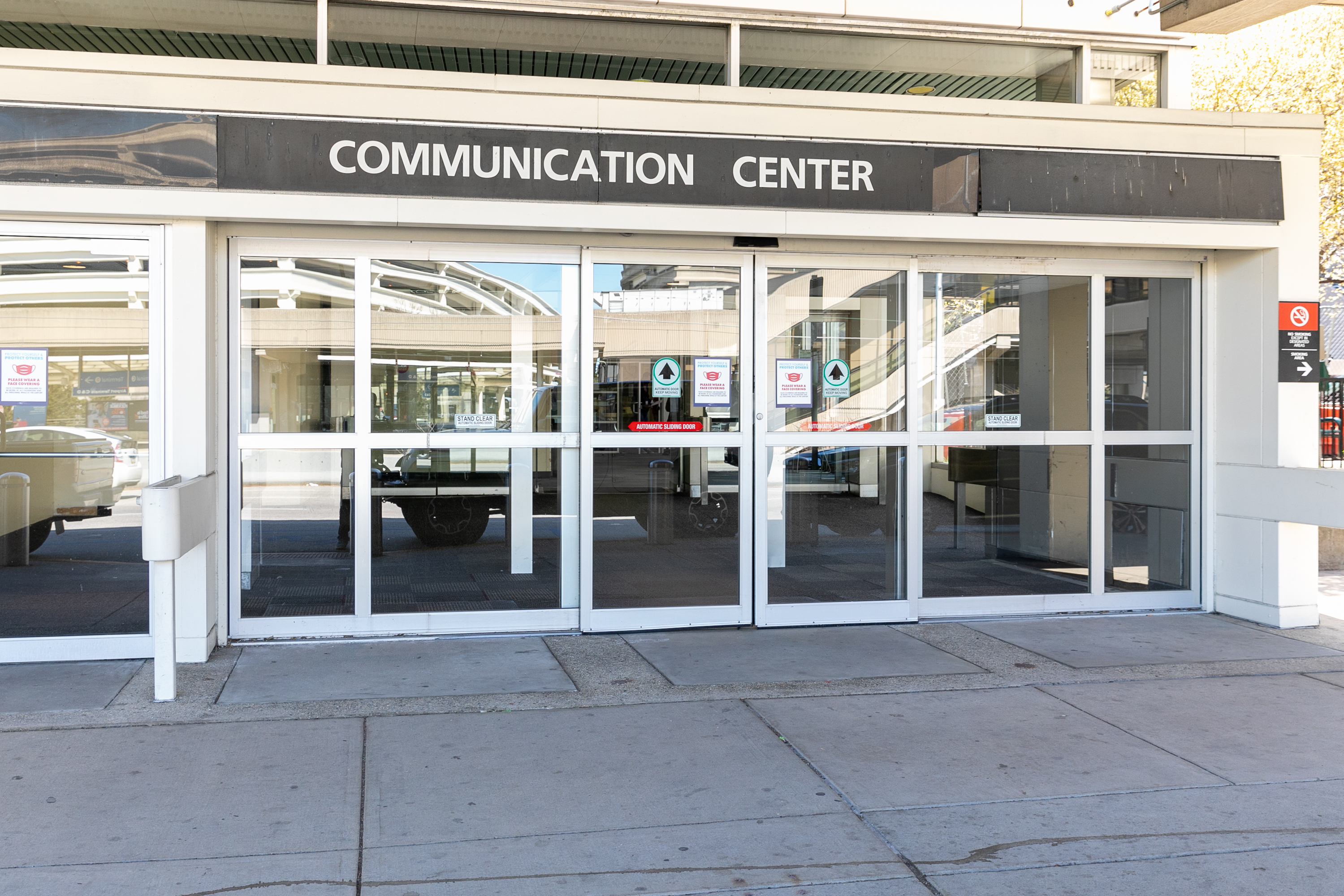
Philadelphia International Airport (PHL) is looking forward to opening its new Airport Operations Center (AOC) in early 2023 in the current Communications Center in Terminal C.
The process, which will begin at the end of February, will bring Airport Operations Tower Coordinators (OTCs), Job Control operators, and Systems Control (security) personnel into one facility, making the AOC the nerve center of the airport.
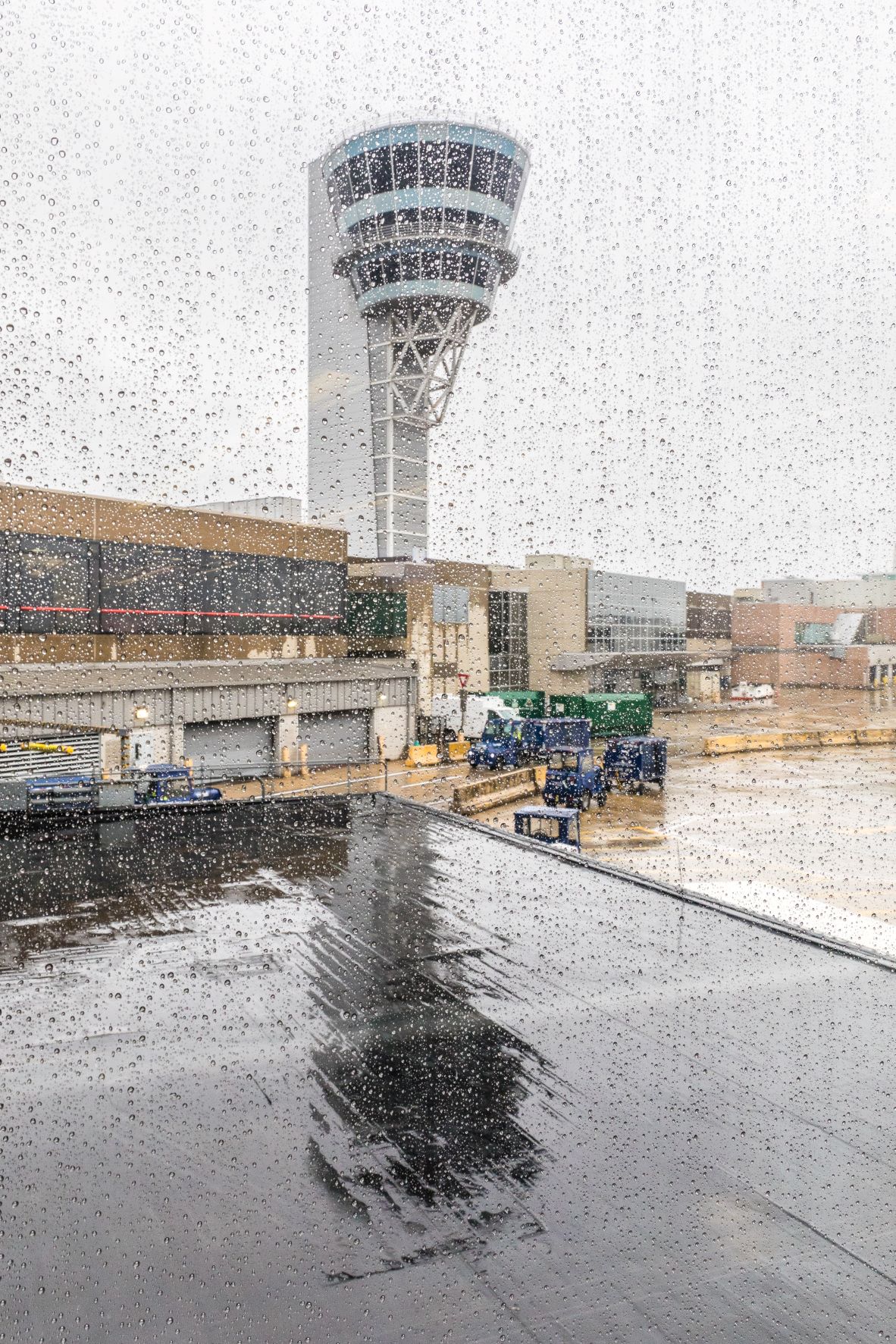
When people think of weather and air travel, usually the first images that pop up are of plows and other apparatus clearing snow off runways and deicing liquid bathing aircraft on airport deicing pads.
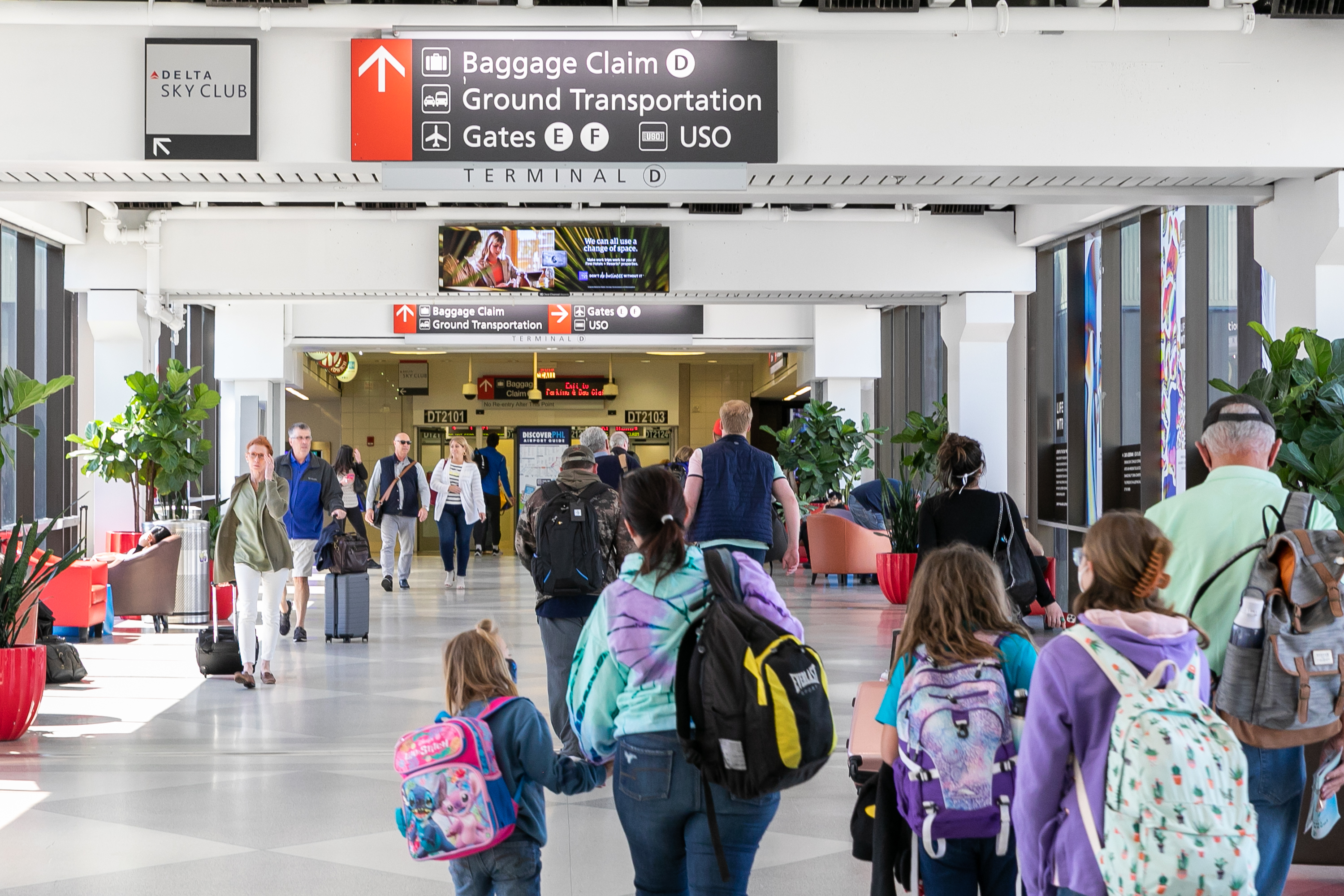
Millions of people will travel domestically and internationally through Philadelphia International Airport (PHL) and airports around the world this summer. According to the World Travel & Tourism Council, travel within the United States will reach pre-pandemic numbers in 2022.
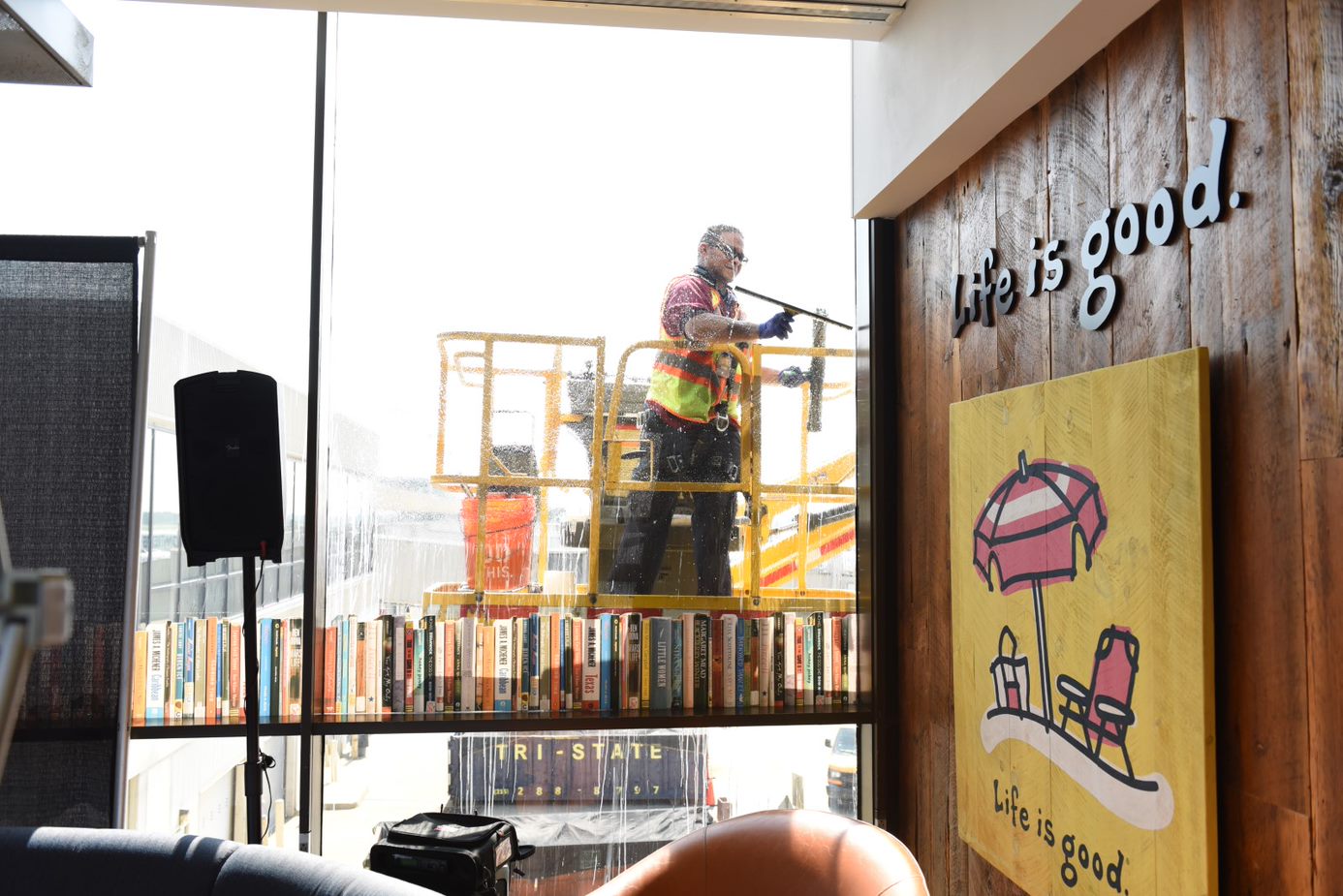
As we enter the summer months, Philadelphia International Airport’s (PHL) Operations and Ground Maintenance teams will be working on several projects on the airfield and throughout the facilities. The projects scheduled by the Maintenance Unit and contractors through summer include:
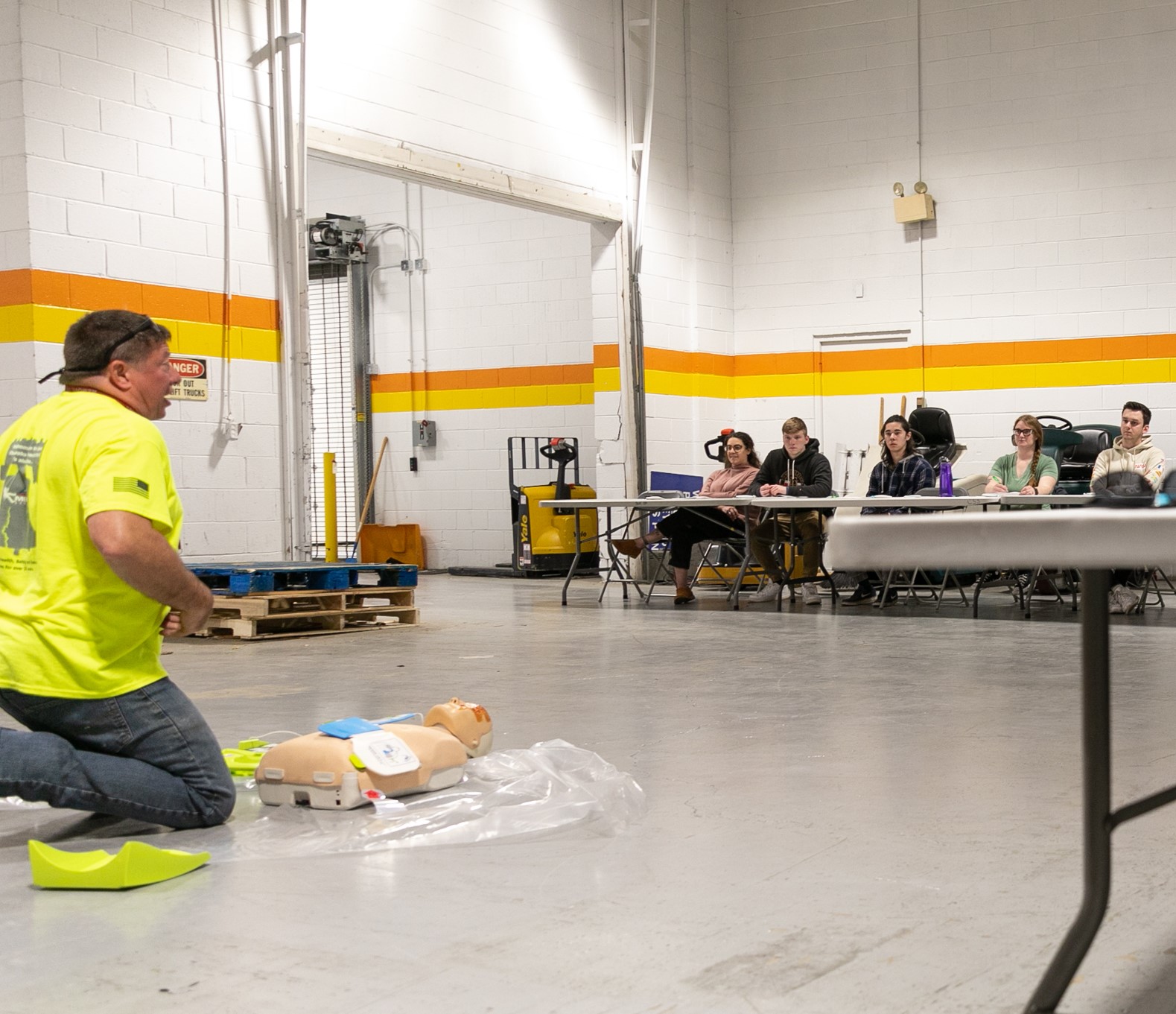
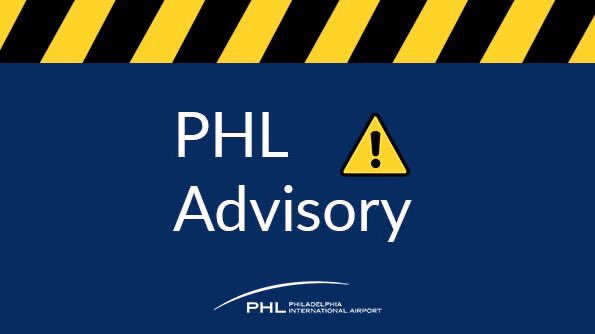
As per the City of Philadelphia's guidance, face masks are encouraged, but no longer mandated inside city facilities, including Philadelphia International Airport, as of Friday, April 22, 2022. Guests and staff may choose to continue to wear masks at their own discretion.
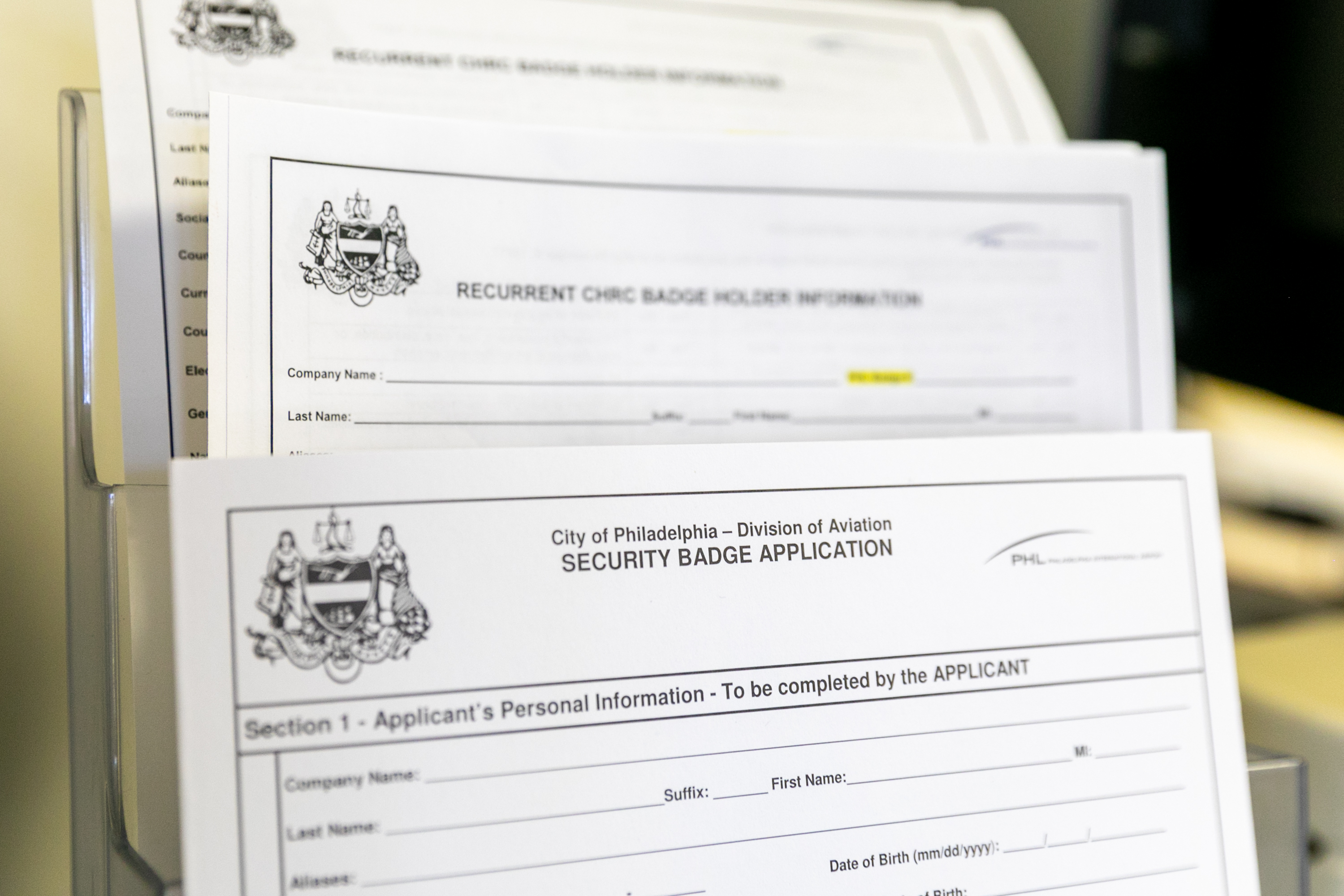
Airports across the country have been mandated by the Transportation Security Administration (TSA) to implement Rap Back, a continuous search and reporting system of arrests and convictions through the FBI. By providing daily updates on fingerprints on file, Rap Back is expected to close the loopholes that exist between the hiring process and a felonious encounter with the authorities.
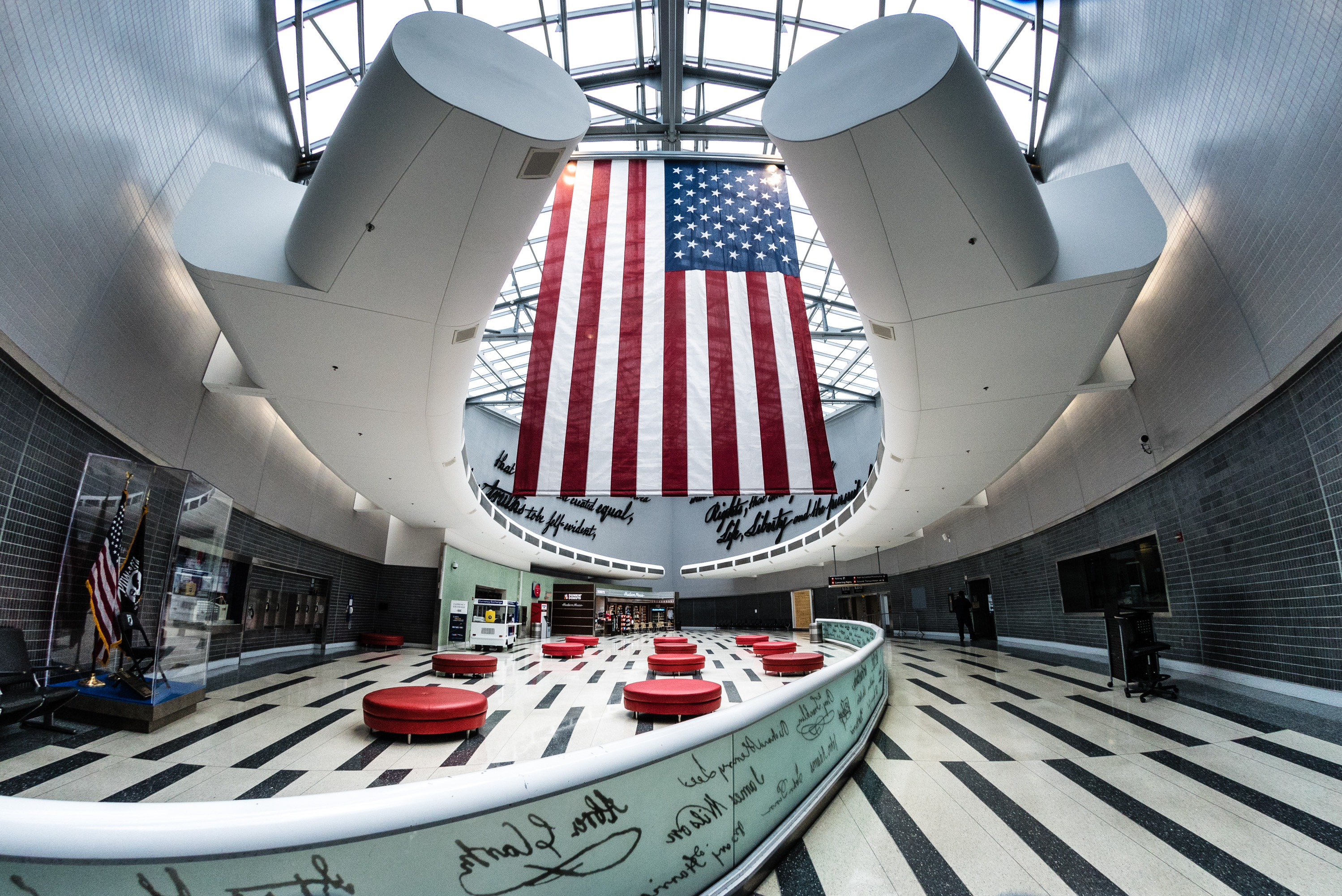
In the coming weeks, many transatlantic routes will be returning to Philadelphia International Airport (PHL). If it's been a while since you've traveled internationally, check out this video for what you need to know to make your return trip to the US as smooth as possible.
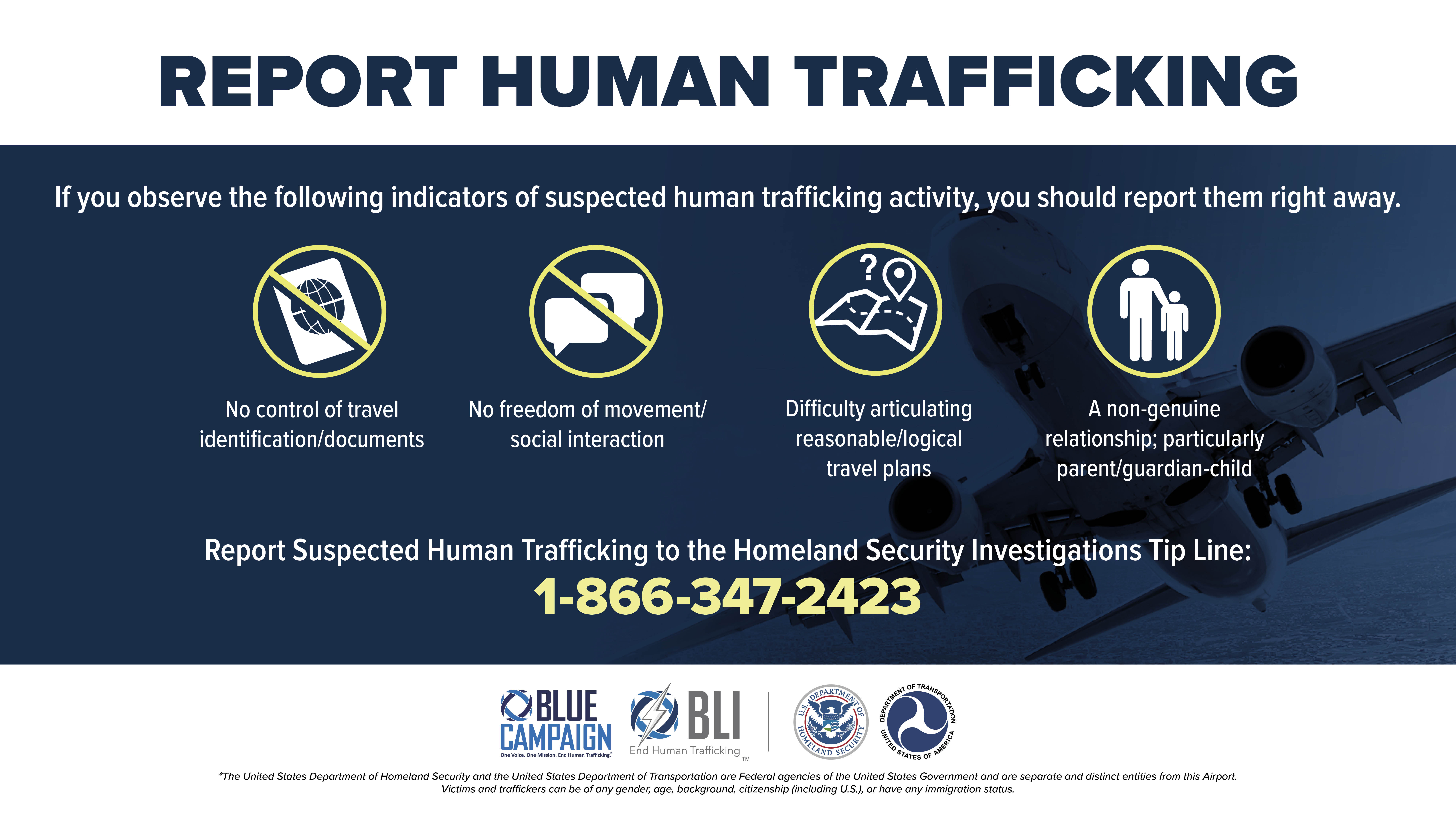
Human trafficking, the illegal trade of human beings for exploitation or forced labor, is the fastest growing and second largest criminal industry in the world, generating billions of dollars in illegal profits and affecting an estimated 24.9 million men, women and children around the globe.
Each time planes land on the airfield, the wheels leave rubber and skid on the runway surface.
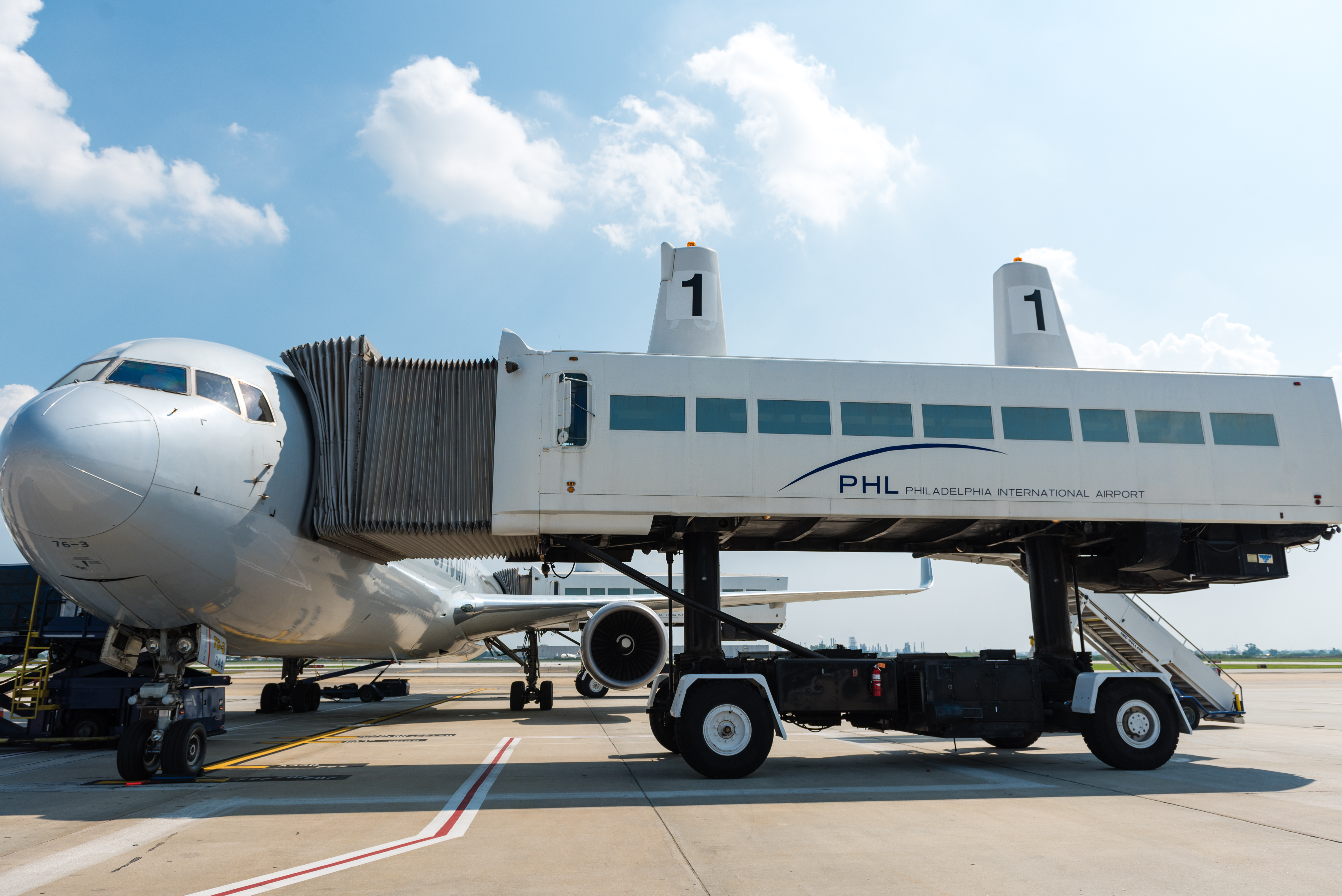
Philadelphia International Airport (PHL) is one of a few airports in America that continues to utilize its Passenger Transfer Vehicles (PTVs). The vehicles, also known as “Plane Mates” or “mobile lounges,” were designed by Eero Saarinen in the 1960s.
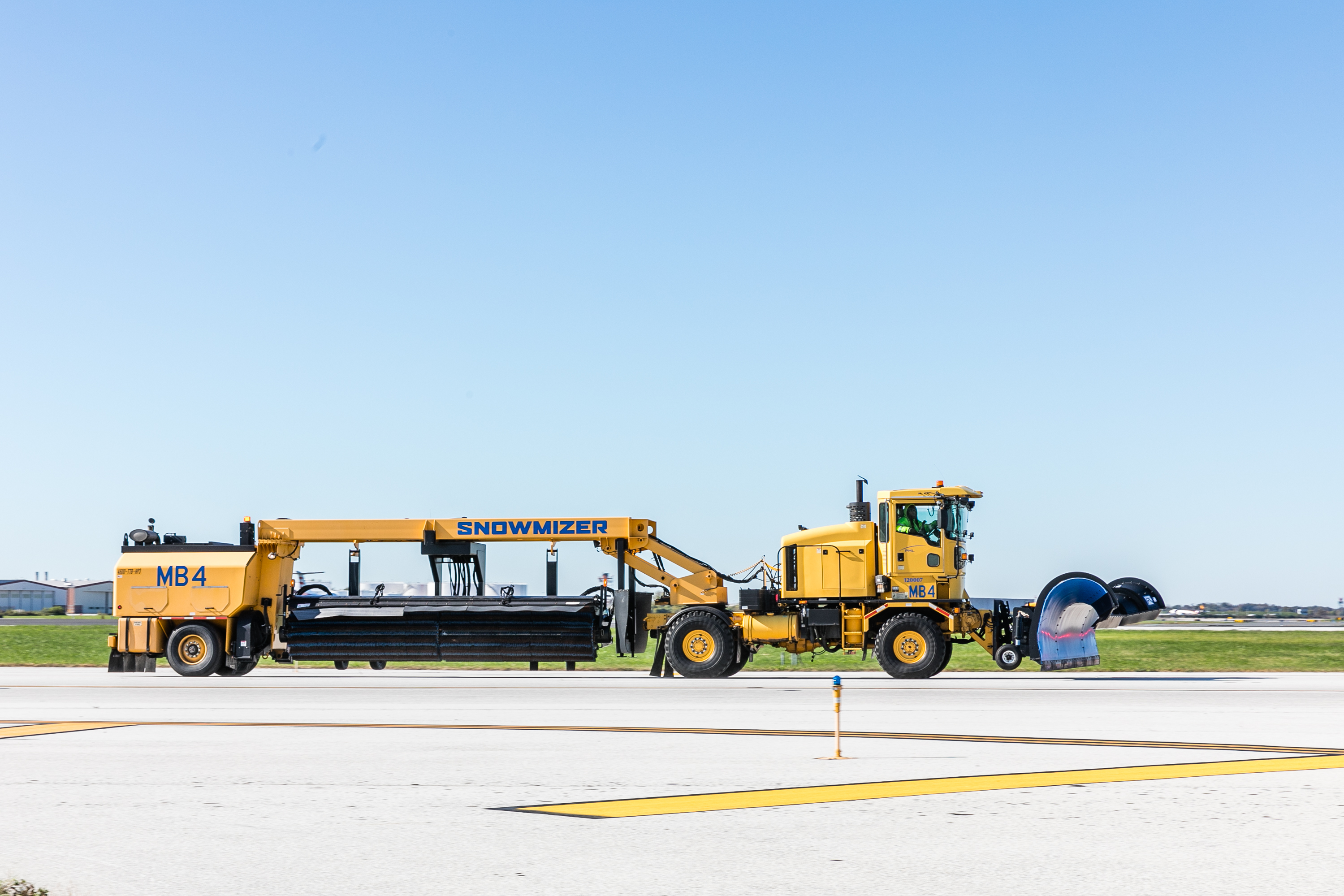
Although winter does not officially begin until December 21, Philadelphia International Airport’s (PHL) Pavement and Grounds (P&G) team begins preparing for the season’s arrival in August.
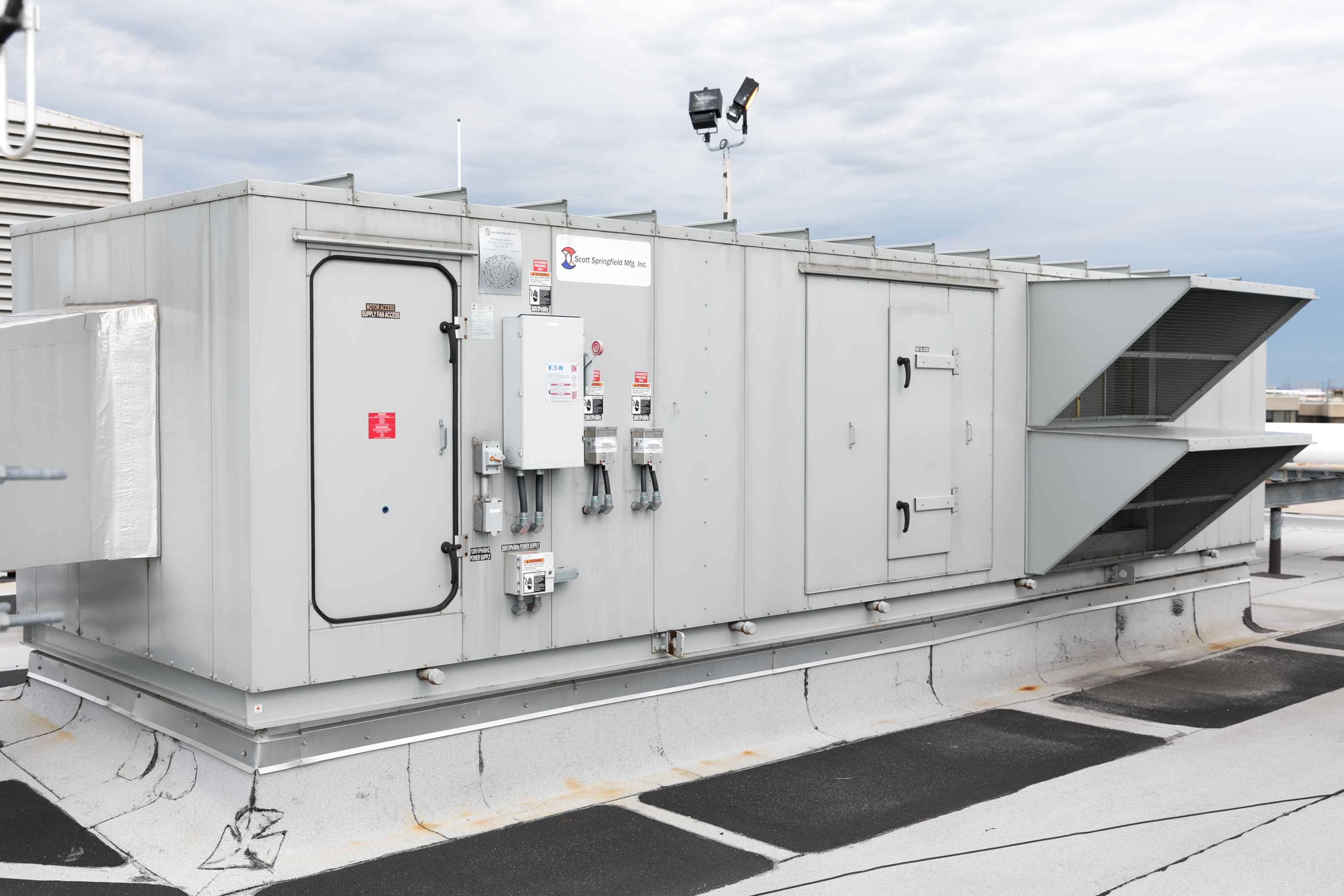
Have you ever looked at the large, gray rectangular boxes on the roof of Philadelphia International Airport (PHL) and wondered what they are and what they do? These units are called air handlers and they have the essential function of circulating air evenly throughout the airport. There are more than 700 air handlers airport-wide that provide PHL with warm or cold air, depending on the time of year.

October’s arrival brings several changes to our region. Changes in weather, changes in landscape colors, changes in sports. This year, Philadelphia International Airport (PHL) is planning to bring a change of its own. October is Cybersecurity Awareness Month, and after a year that saw many high-profile attacks with far-reaching implications, PHL wants to change the public’s perspective of cybersecurity.
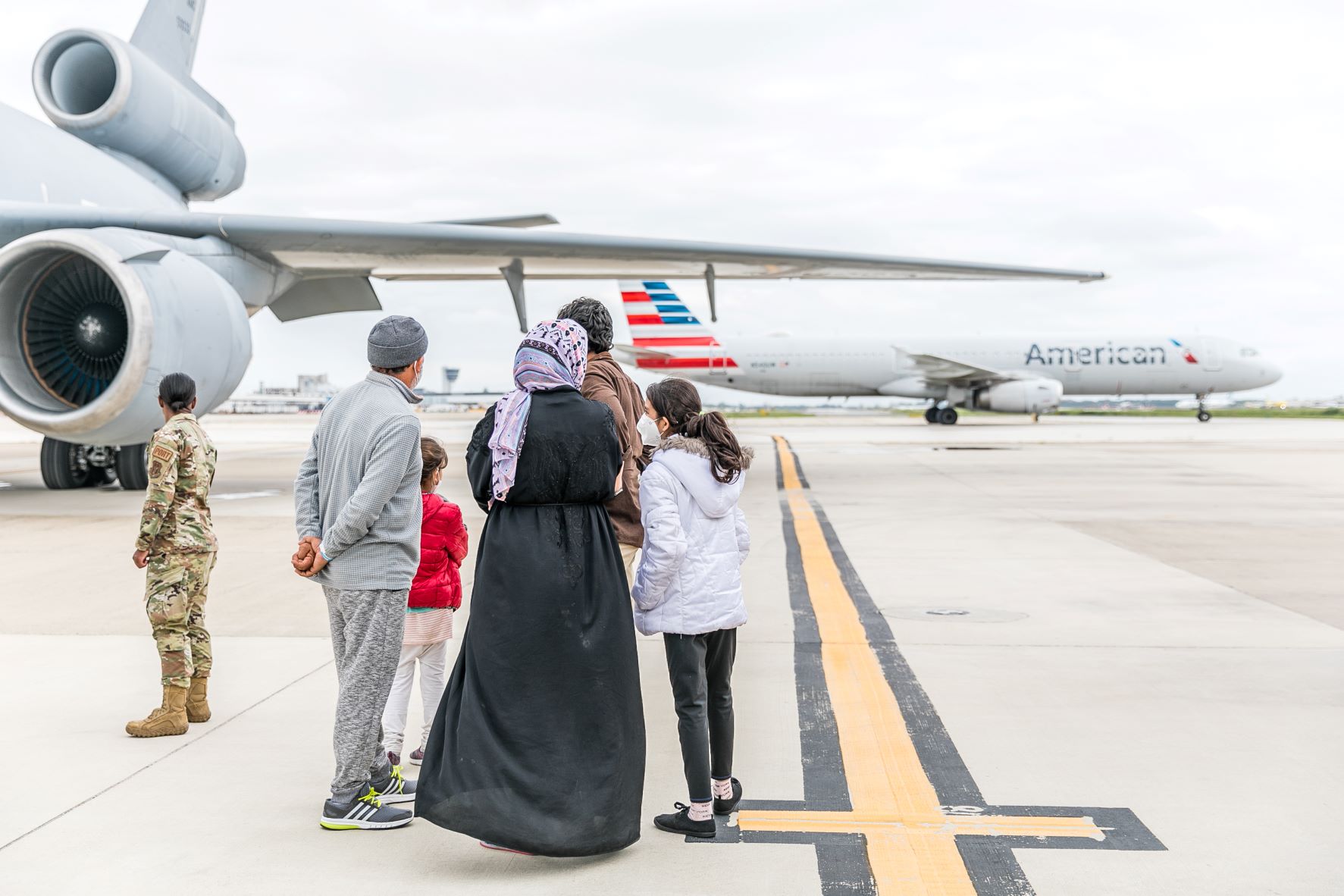
Note: Check out PHL's official Operation Allies Refuge Photography and Videography.
Spring and summer storms can make for long days for travelers and airport staff due to delayed, cancelled and diverted flights. On a recent stormy evening, PHL welcomed more than 20 planes that were headed to the New York City area but were forced to make weather-related stops before reaching their destinations.
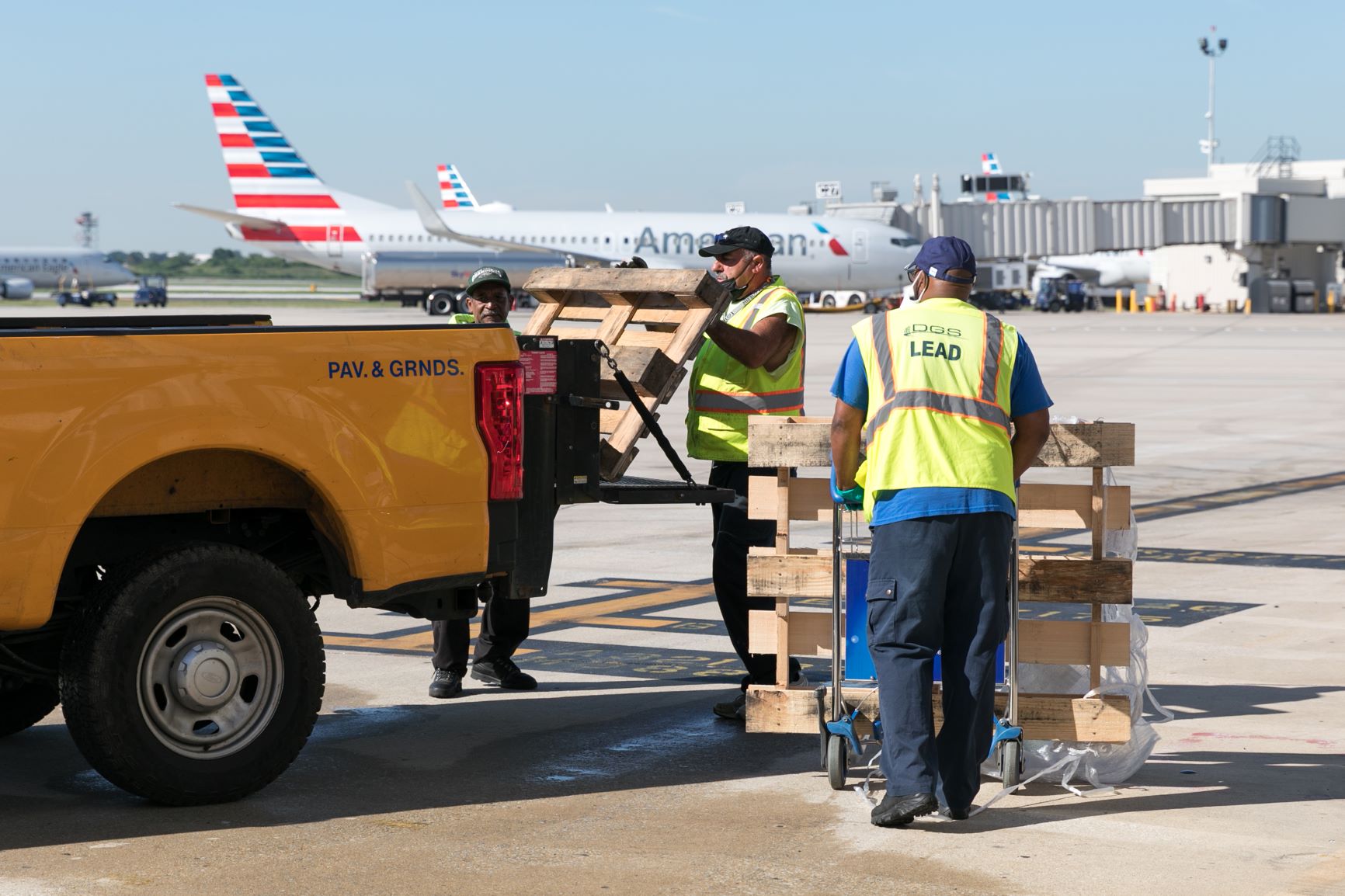
Debris on an airfield’s runways, taxiways and ramp areas poses safety hazards to individuals, aircraft and other equipment and can lead to accidents. To mitigate the hazards caused by foreign objects, the Federal Aviation Administration (FAA) requires airports to have a Foreign Object Debris (FOD) Management Plan.
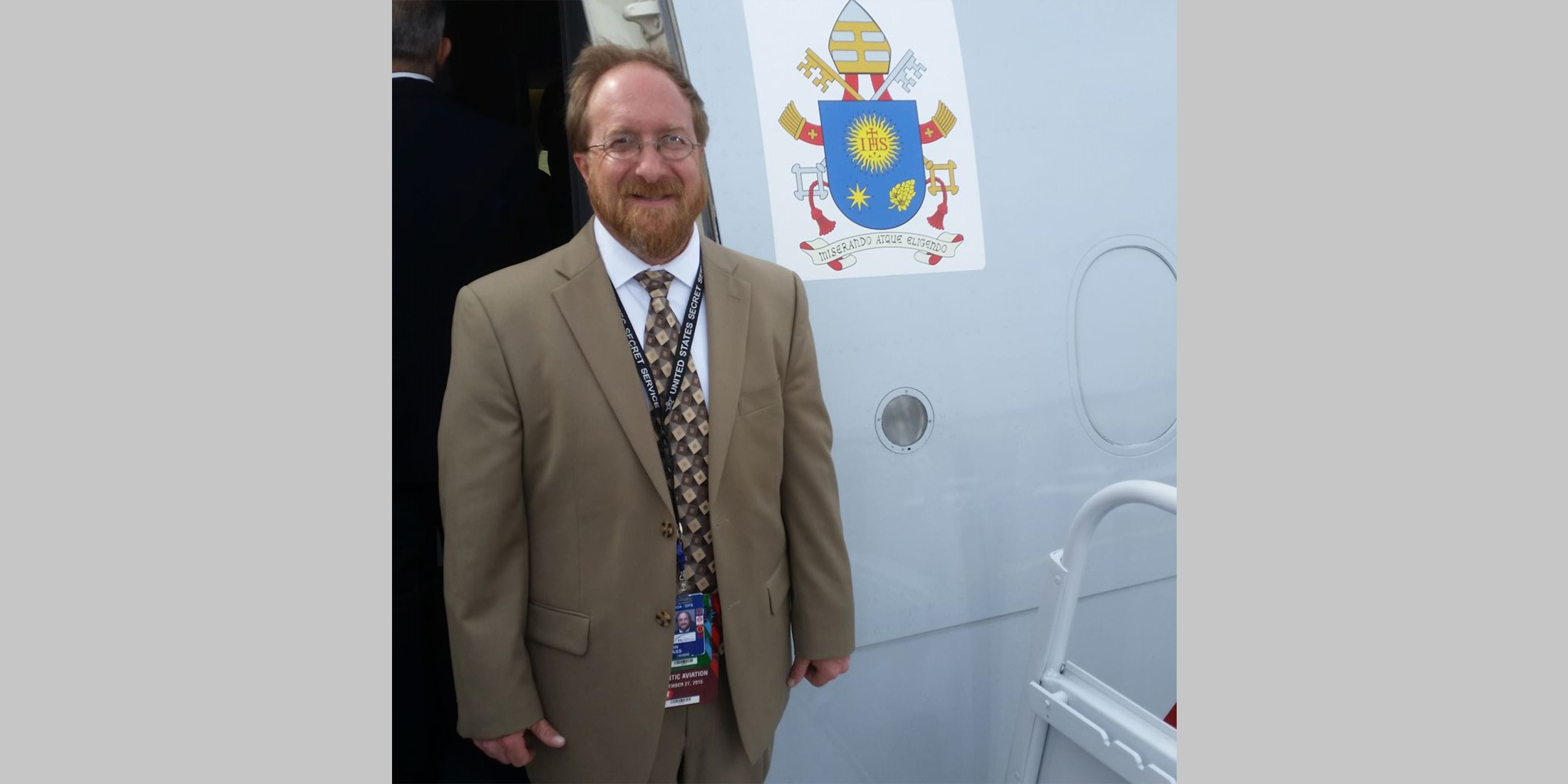
On the morning of Tuesday, September 11, 2001, Airport Operations Superintendent John Glass was sitting in his office at Philadelphia International Airport (PHL) looking over inspection reports, construction activities, and a variety of daily operations-related matters that are routine at an airport. The day seemed set up to be an ordinary one for Glass who was then responsible for overseeing the day to day operations at PHL.

In light of the germ-wariness amplified by the pandemic, Philadelphia International Airport (PHL), in its ongoing campaign to create a healthier and safer experience for guests and employees, has partnered with SecurityPoint Media to bring the SecureTray System® and its TSA bin antimicrobial technology to airport checkpoints.
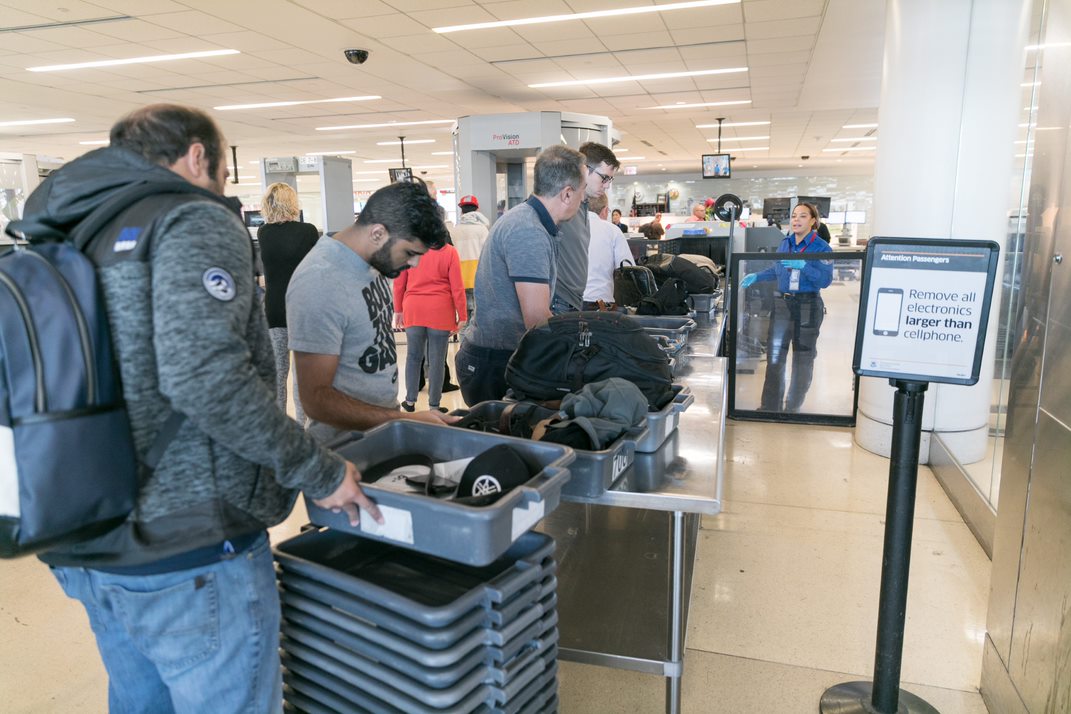
On September 10, 2001, anyone – even those who weren’t flying out – could come to the airport and pass through the security checkpoint to enter the secure area. At the checkpoint, screeners employed by private companies hired by the airlines scanned carry-on bags. Anyone passing through the checkpoint could do so without taking off shoes, belts, and outerwear or removing items from their carry-ons.

It’s getting busy at Philadelphia International Airport (PHL) as more people are traveling again following nearly a year in which the pandemic slowed air travel to levels not seen in decades. And it’s expected to get even busier as the 2021 summer vacation season arrives as the country opens up and Covid-19 restrictions are lifted.
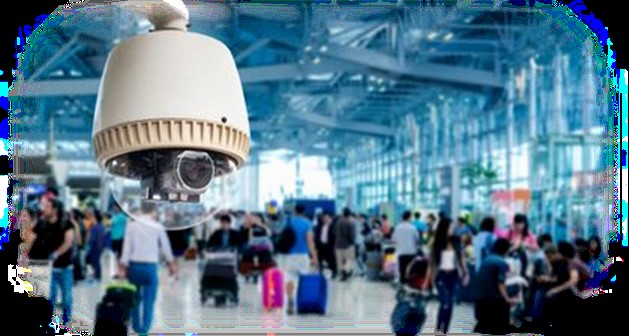
Just about everyone is familiar with Closed Circuit Television (CCTV) cameras. They’ve been used for decades just about anywhere including public facilities like airports where surveillance cameras are as ubiquitous as airplanes. Like the livery on planes, things have changed over the years. Perhaps nowhere has change been more profound as in technology where time can be defined as the analog era versus the digital world.
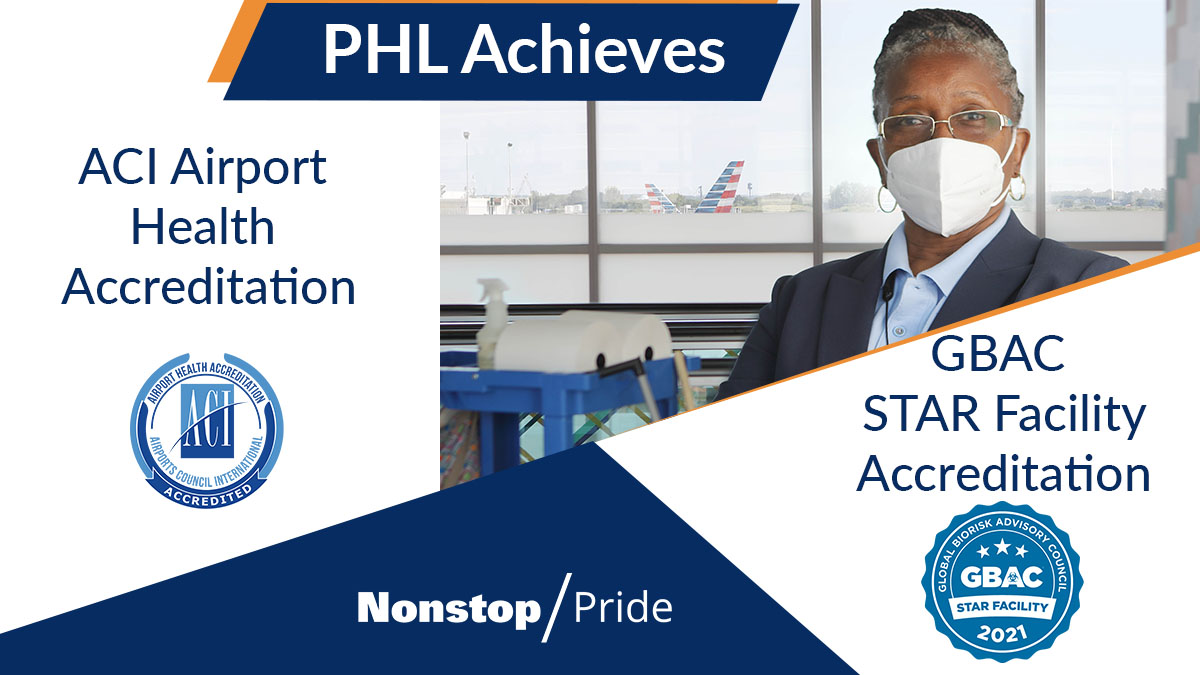
Philadelphia International Airport (PHL) has achieved Airport Health Accreditation (AHA) from Airports Council International (ACI) and Global Biorisk Advisory Council (GBAC) STAR Facility Accreditation for health and safety measures put in place throughout the airport's facilities.

Welcome back to PHL!
The City of Philadelphia and the Commonwealth of Pennsylvania have announced new COVID-19 guidance. Here’s what you need to know about how this will impact PHL:
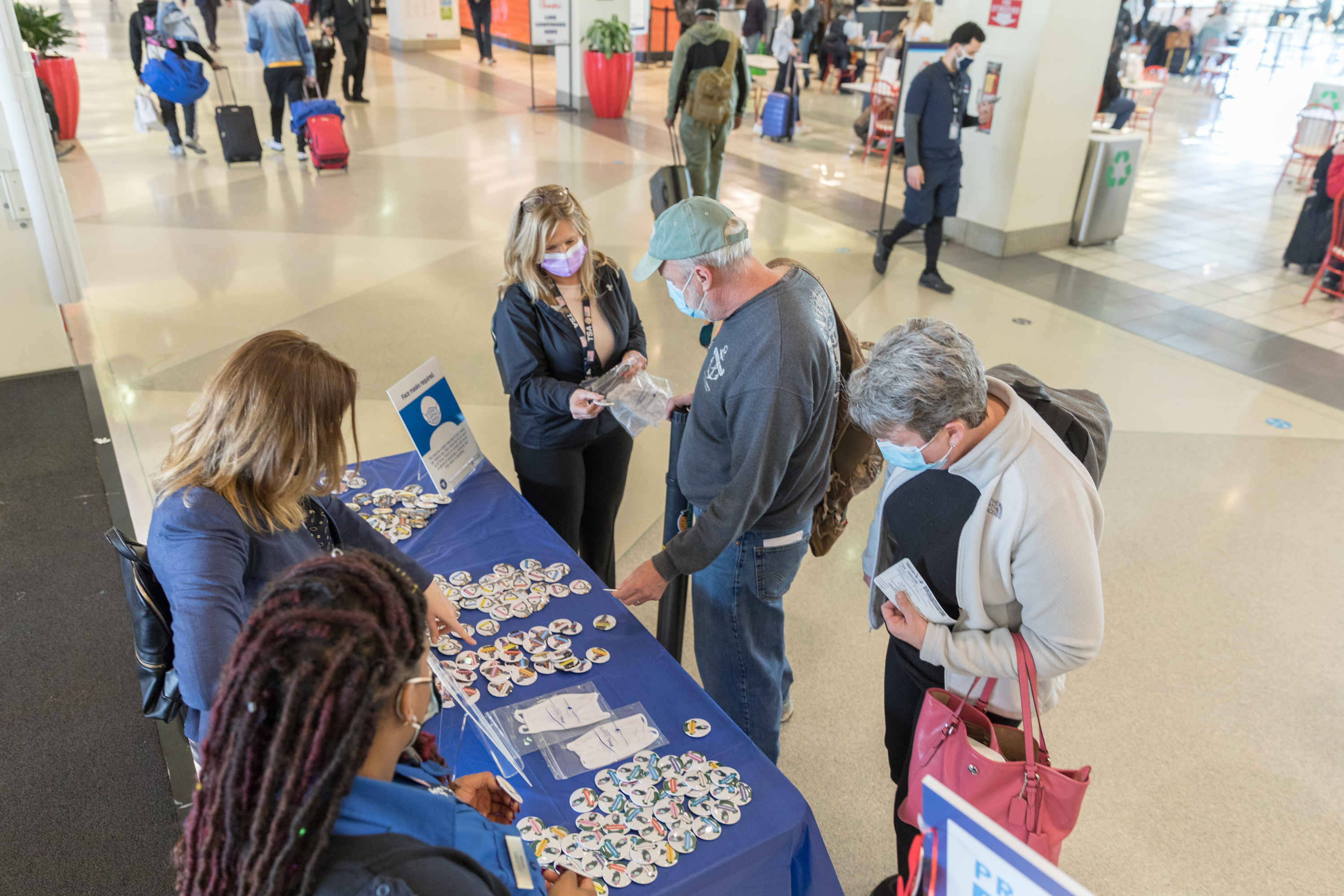
Wearing face masks has been required of all PHL guests and employees since last May, when the City of Philadelphia’s face covering mandate was put into effect.
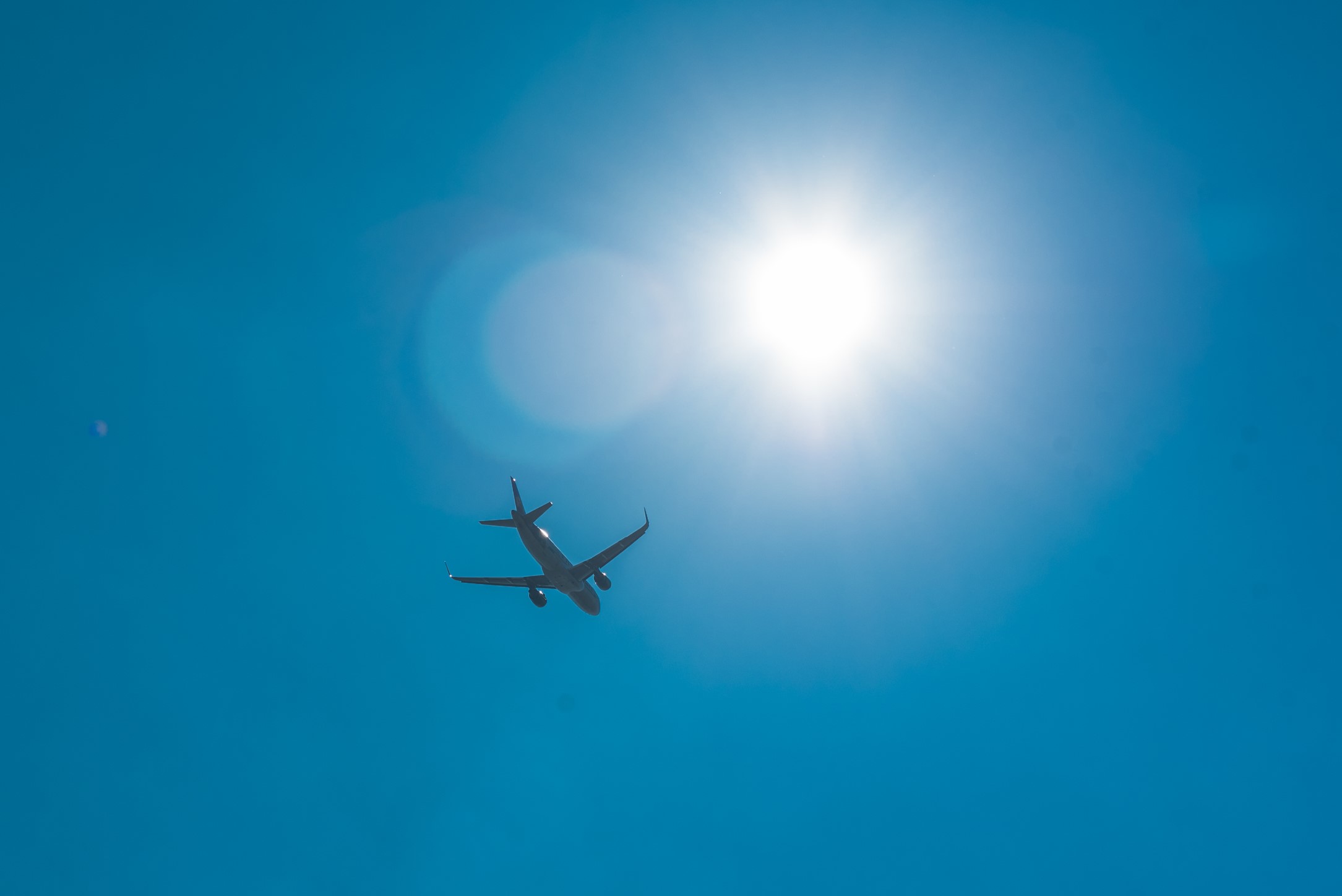
President Joe Biden's Executive Order on Promoting COVID-19 Safety in Domestic and International Travel has gone into effect.
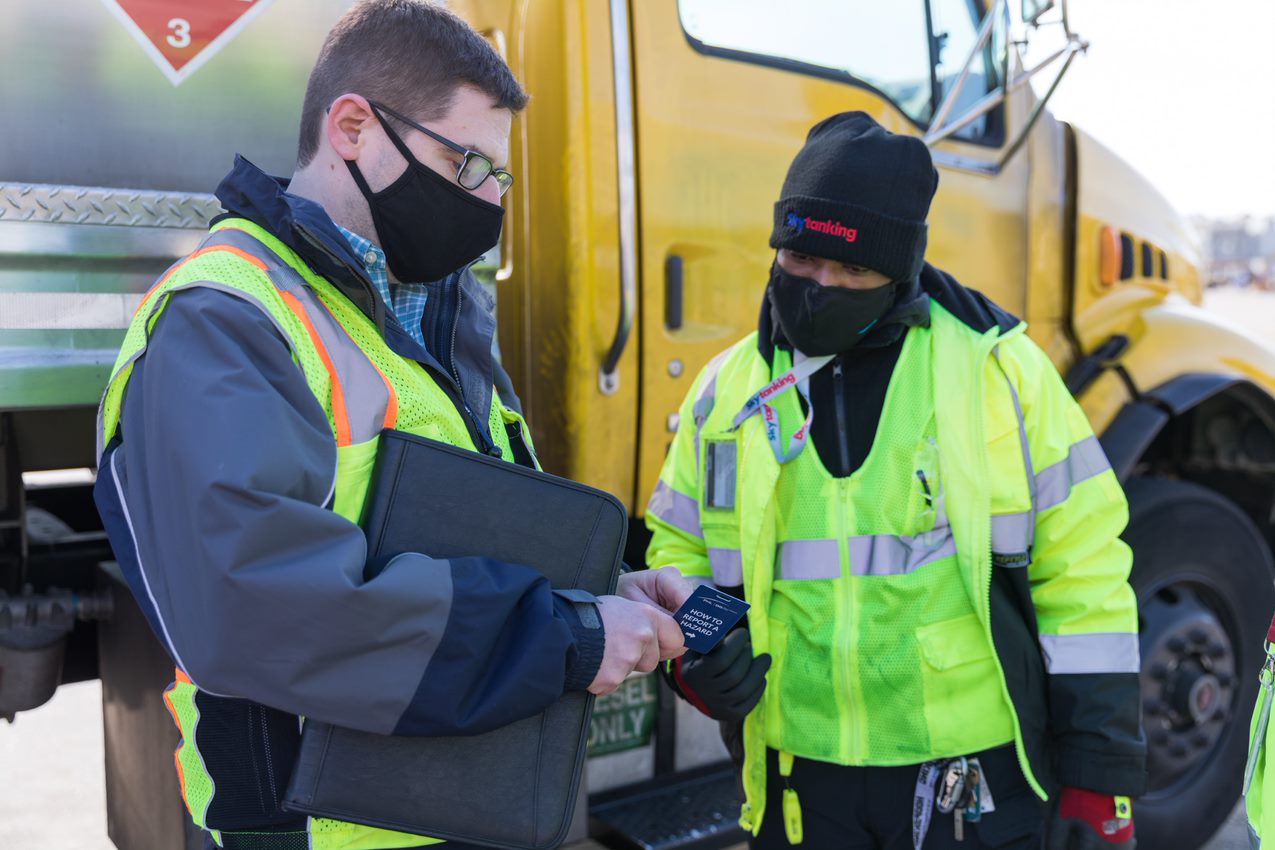
Safety first. While it may sound like a cliché, it’s a mantra at facilities like airports. Maintaining a safe environment for guests, employees, and tenants is paramount.

The Philadelphia Fire Department Engine 78 at Philadelphia International Airport (PHL) has put into service a new Mass Medical Care Unit that will improve the deployment of resources should a mass medical emergency occur at the airport. Known as Foxtrot 11, the state-of-the art apparatus replaces a 1982 box truck and 20-foot trailer that needed to be towed to the scene of an incident.
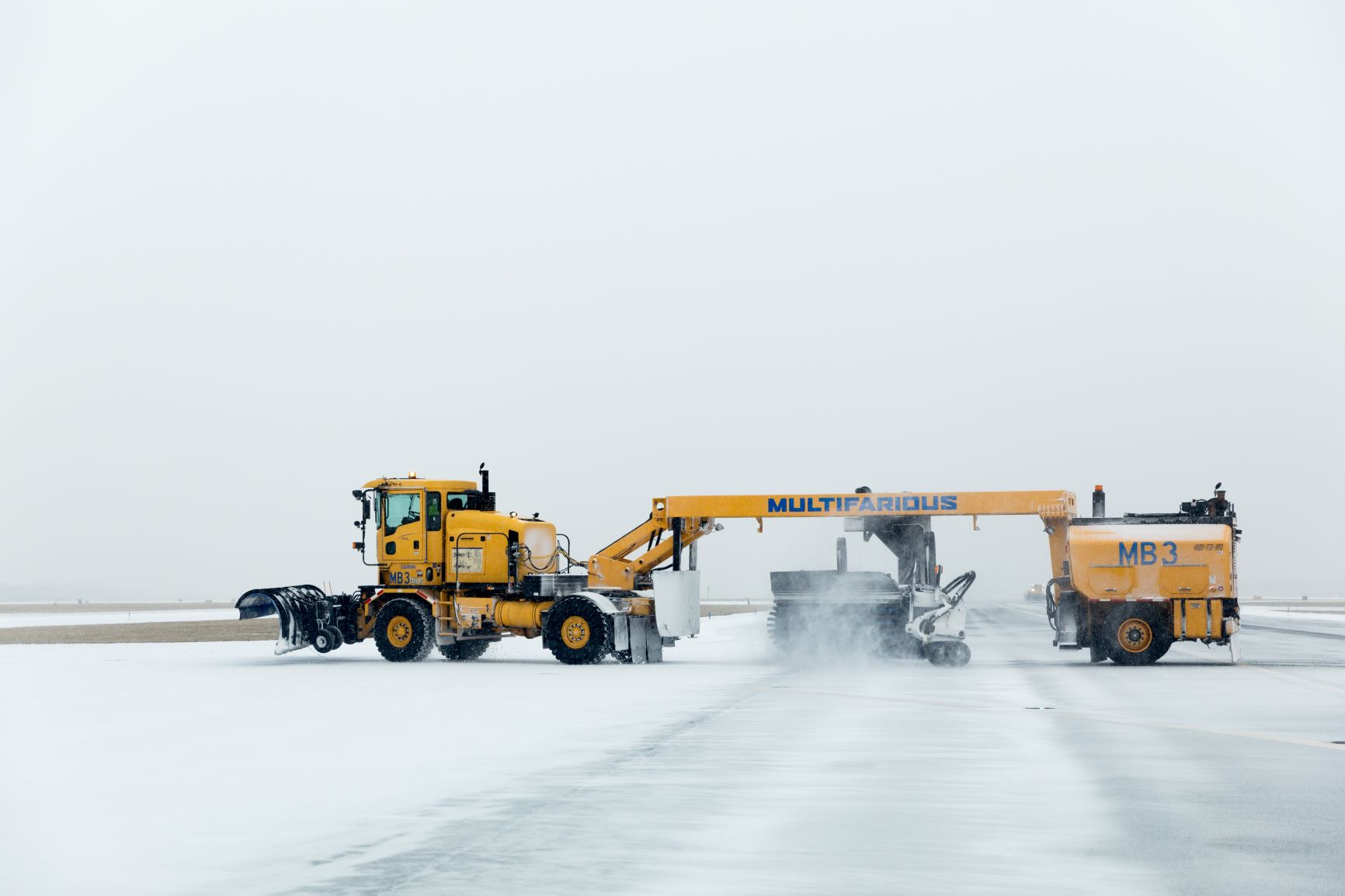
It’s a bright sunny morning in early November and the mercury is inching up to a forecasted high in the 60s as a conga line of huge yellow trucks fronted by large plows and carrying brooms repeatedly circles a secondary runway at Philadelphia International Airport (PHL). To the casual observer, the scene is peculiar.
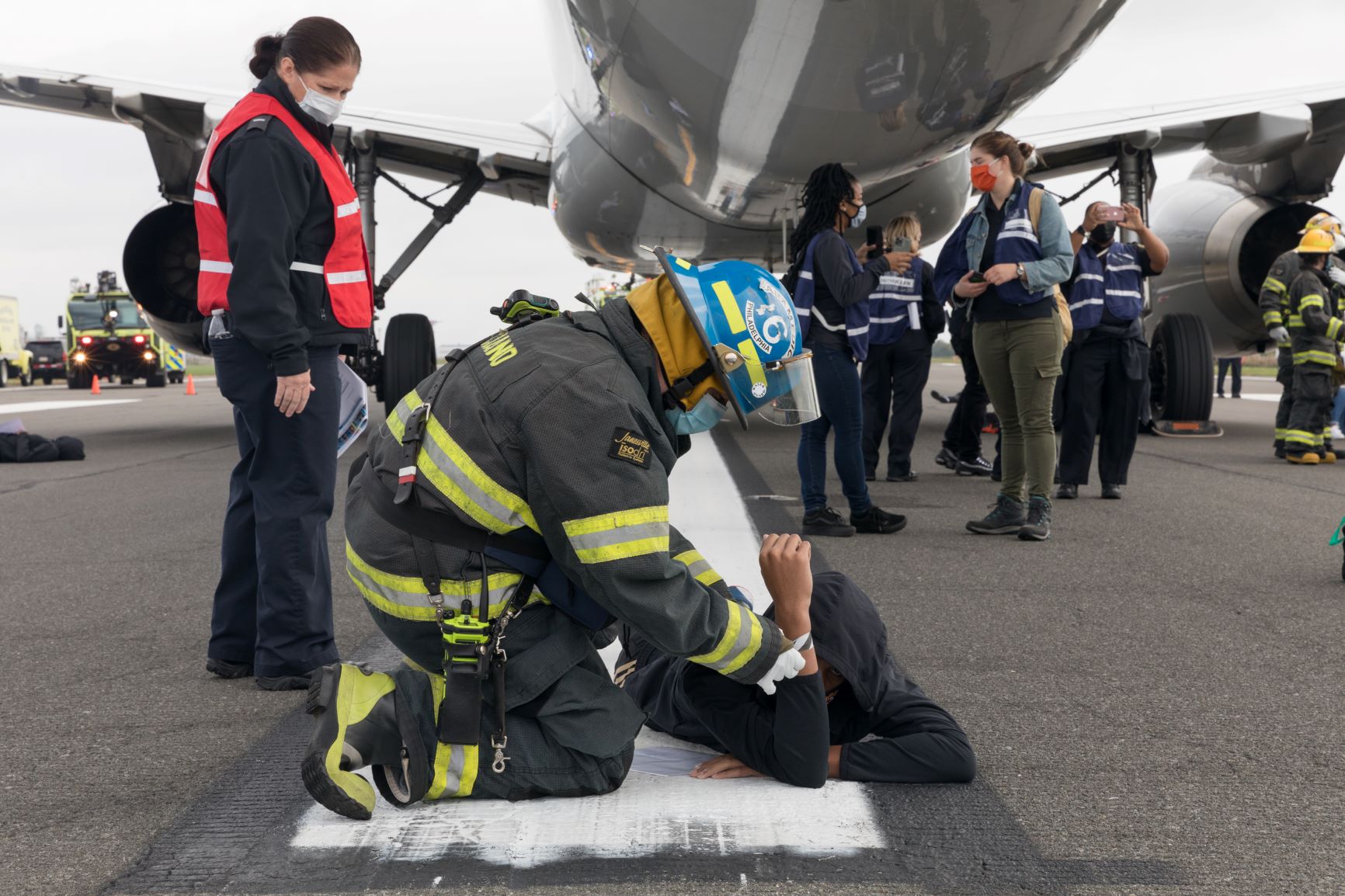
THE SCENARIO: An American Airlines Airbus 321 jetliner with 131 souls on board is preparing to land on Runway 9R during a fast-moving thunderstorm at Philadelphia International Airport (PHL) when the flight encounters severe wind shear.

In its ongoing efforts to put in place initiatives to help stop the spread of COVID-19, the Transportation Security Administration (TSA) is in the process of installing new acrylic barriers at security checkpoints at Philadelphia International Airport (PHL).

Philadelphia International Airport is host to more than 88,000 daily passengers and 21,000 employees, so enabling good hygiene is among the airport’s highest priorities. Check out a behind-the-scenes look at what PHL’s teams are doing to keep the public safe during the COVID-19 public health crisis.
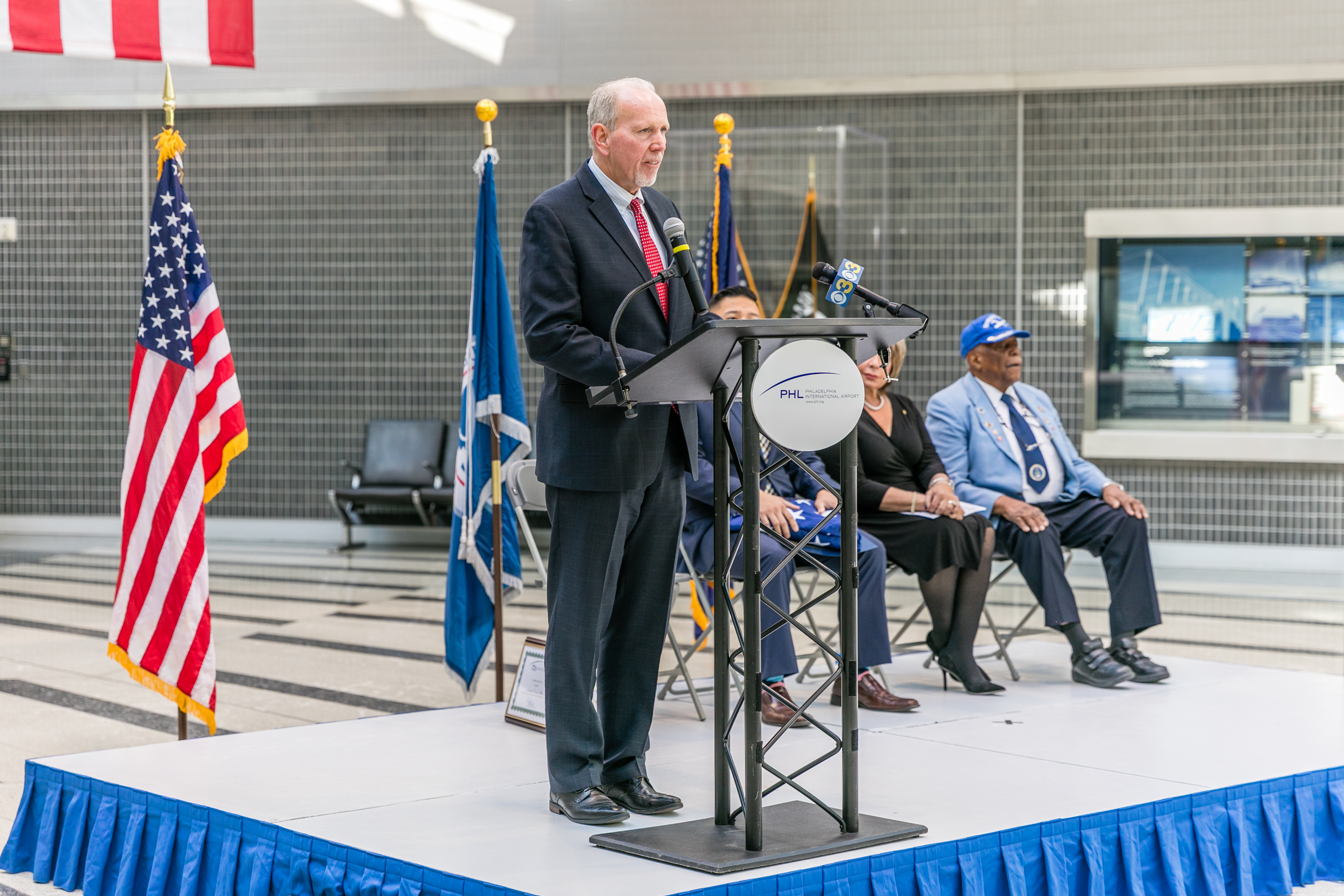
Keith Brune, Chief Operating Officer at Philadelphia International Airport (PHL), has been re-elected for another three-year term as a Director on the Board of the Aviation Council of Pennsylvania (ACP). Brune, who has served on the ACP Board since 2011, will remain there until 2023 at which time he will again come up for re-election.
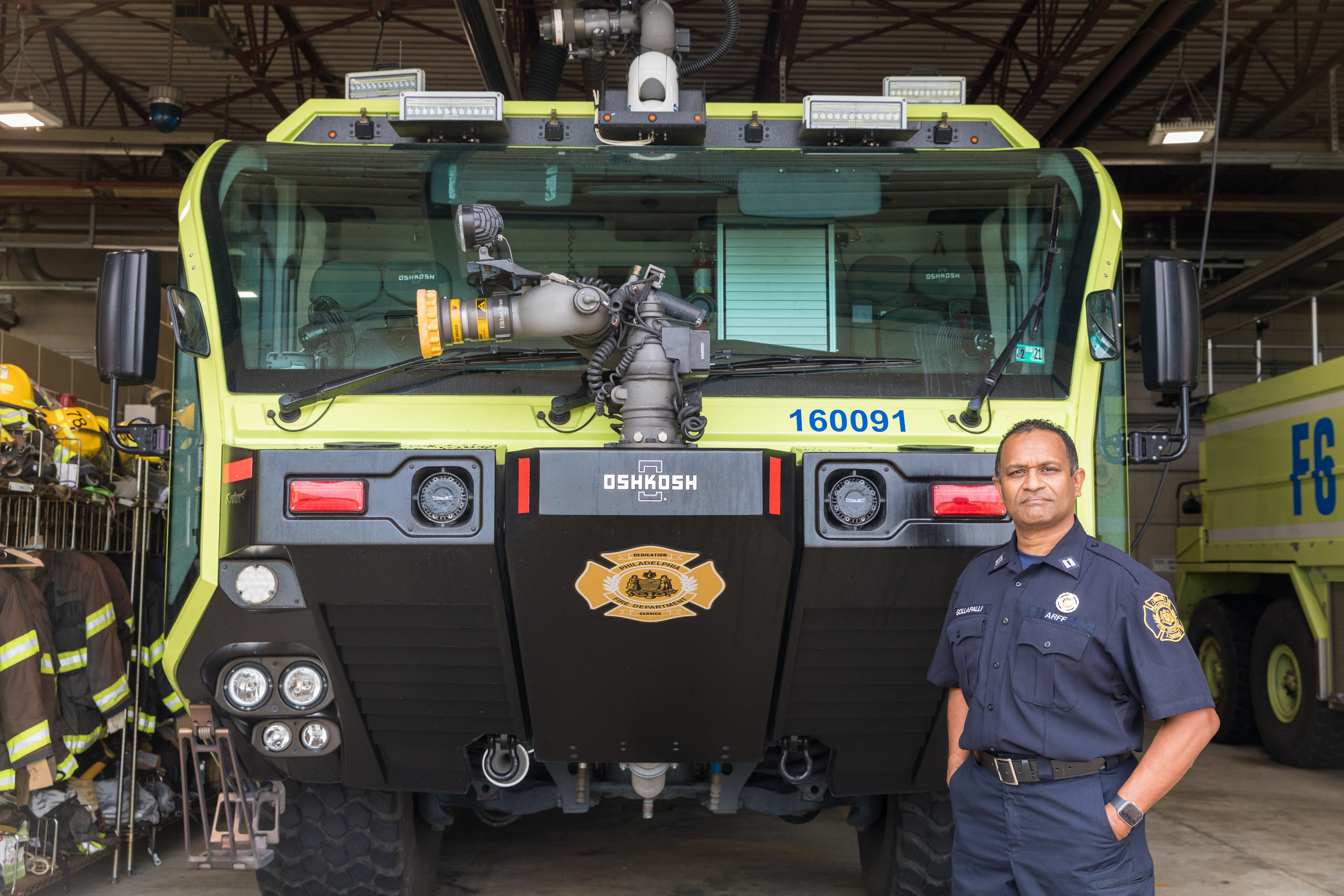
Thirty years ago, Samuel Gollapalli graduated Temple University with a Business degree. It was a proud accomplishment for the young man who came to the United States from India in 1984 in pursuit of an education. The timing, though, was terrible. With the country in a recession, Gollapalli struggled to find work in his field of study.
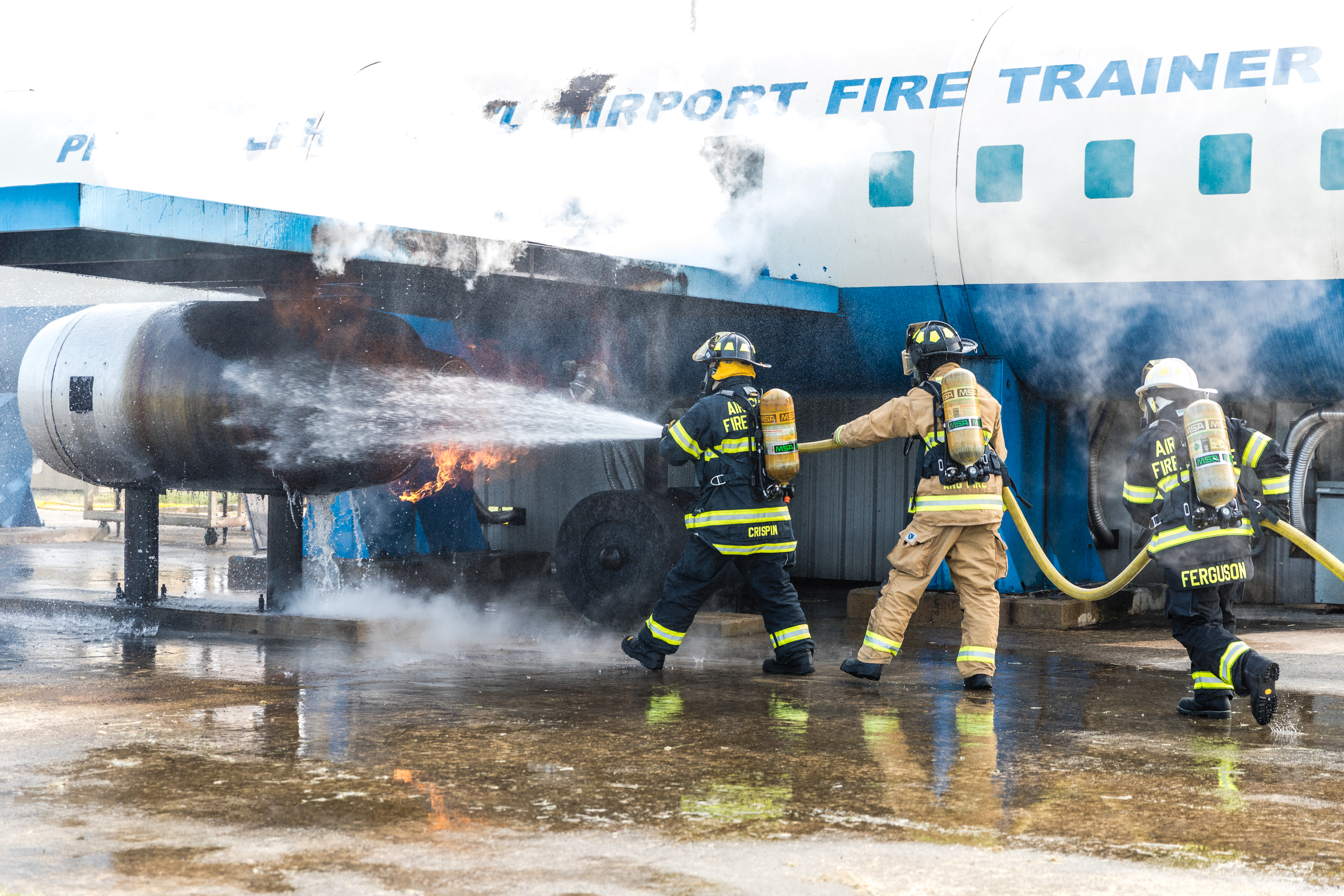
On a pleasantly cool, sunny morning in mid-September, nine members of the 177th Fighter Wing of the New Jersey Air National Guard gathered in a classroom at the Aircraft Rescue Fire Fighting Training Center on the western edge of Philadelphia International Airport (
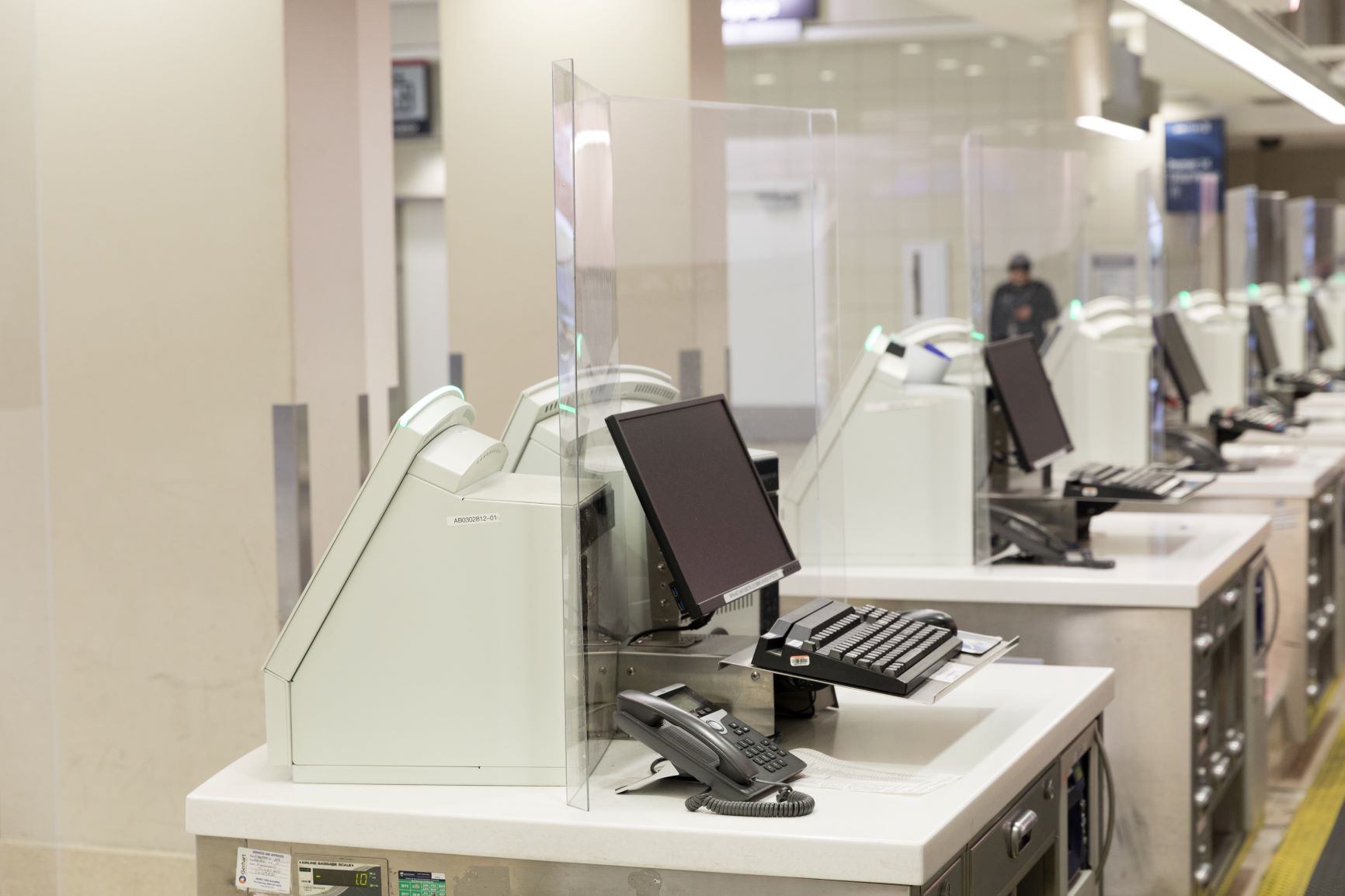
Effective Tuesday, September 15, 2020, Philadelphia International Airport will temporarily discontinue operations in non-secure portions of Terminal A-East. This scope will cover the following areas:
Restricted as of September 15:
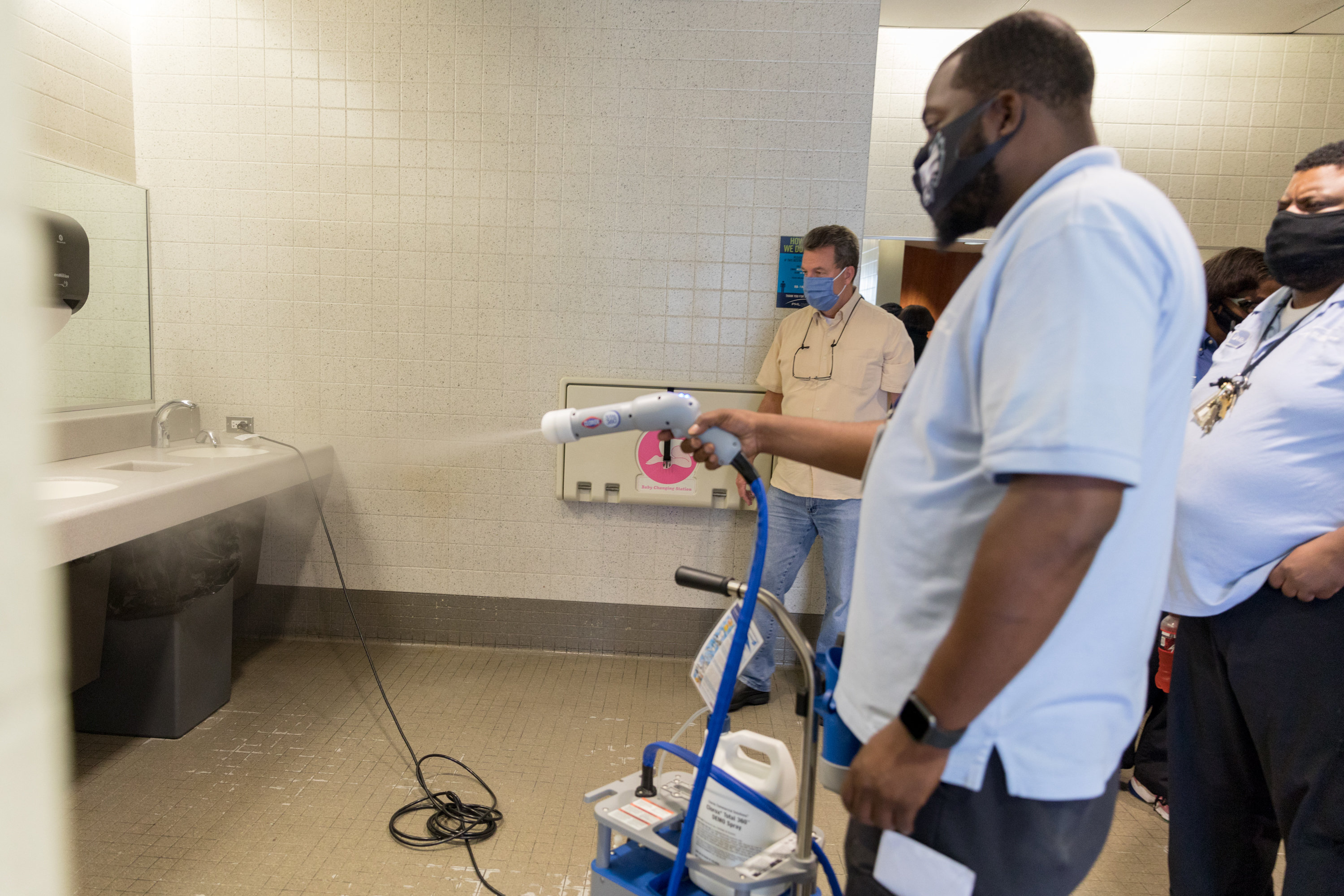
When the COVID-19 outbreak ramped up in March, public facilities like airports started focusing on measures to augment daily cleaning routines in an effort to combat the virus.
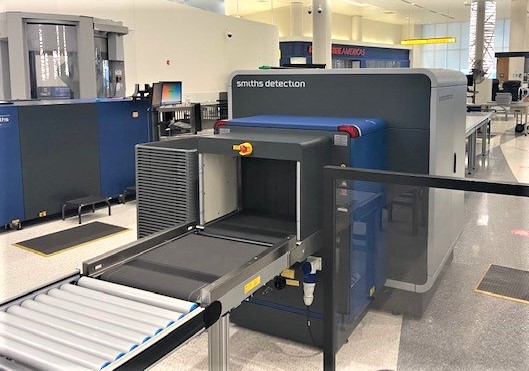
In its ongoing effort to deploy the latest security screening technology to keep the traveling public and airports safe and enhance the screening process, the Transportation Security Administration (TSA) has installed five new state-of-the-art advanced technology computed tomography checkpoint scanners at Philadelphia International Airport (PHL).
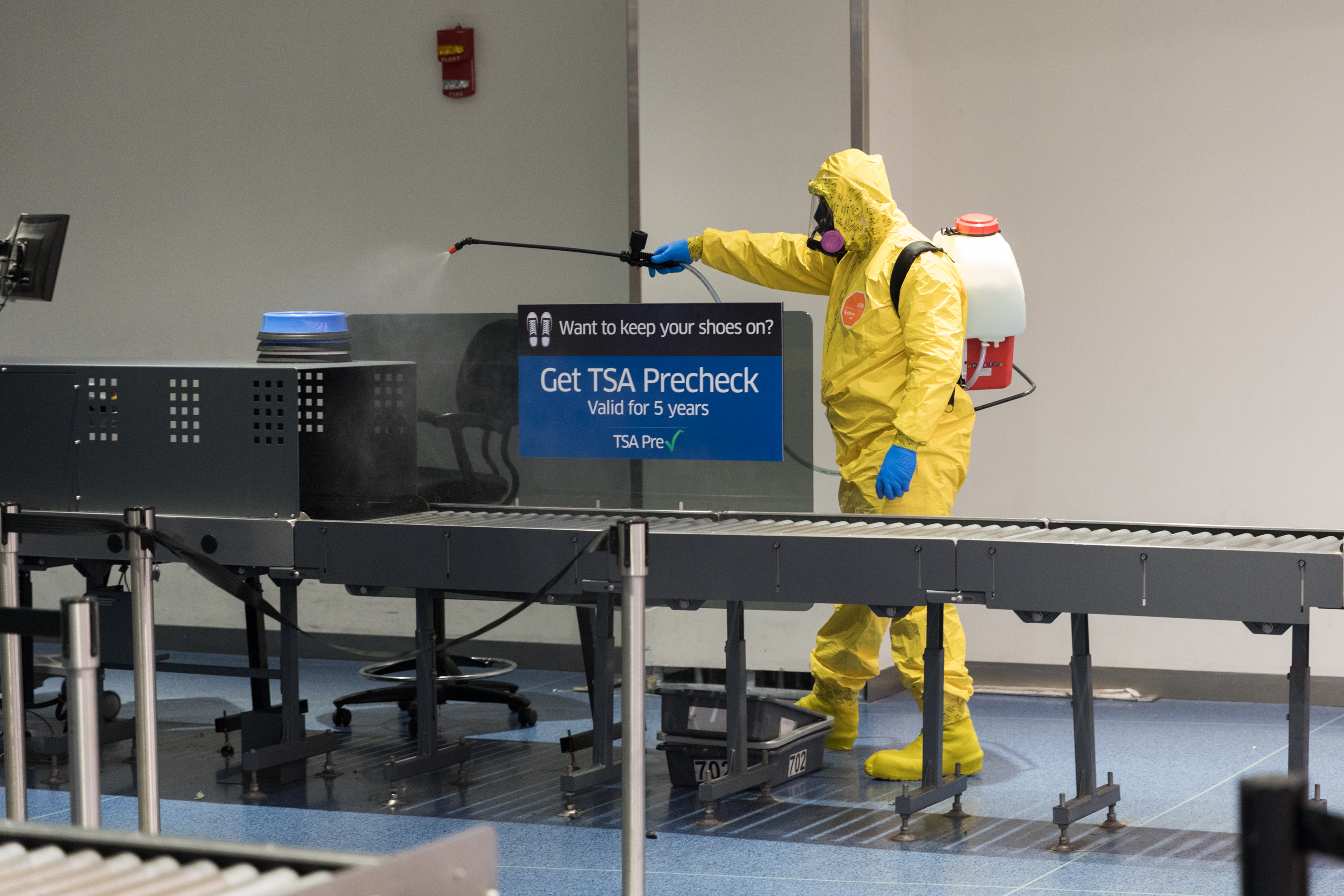
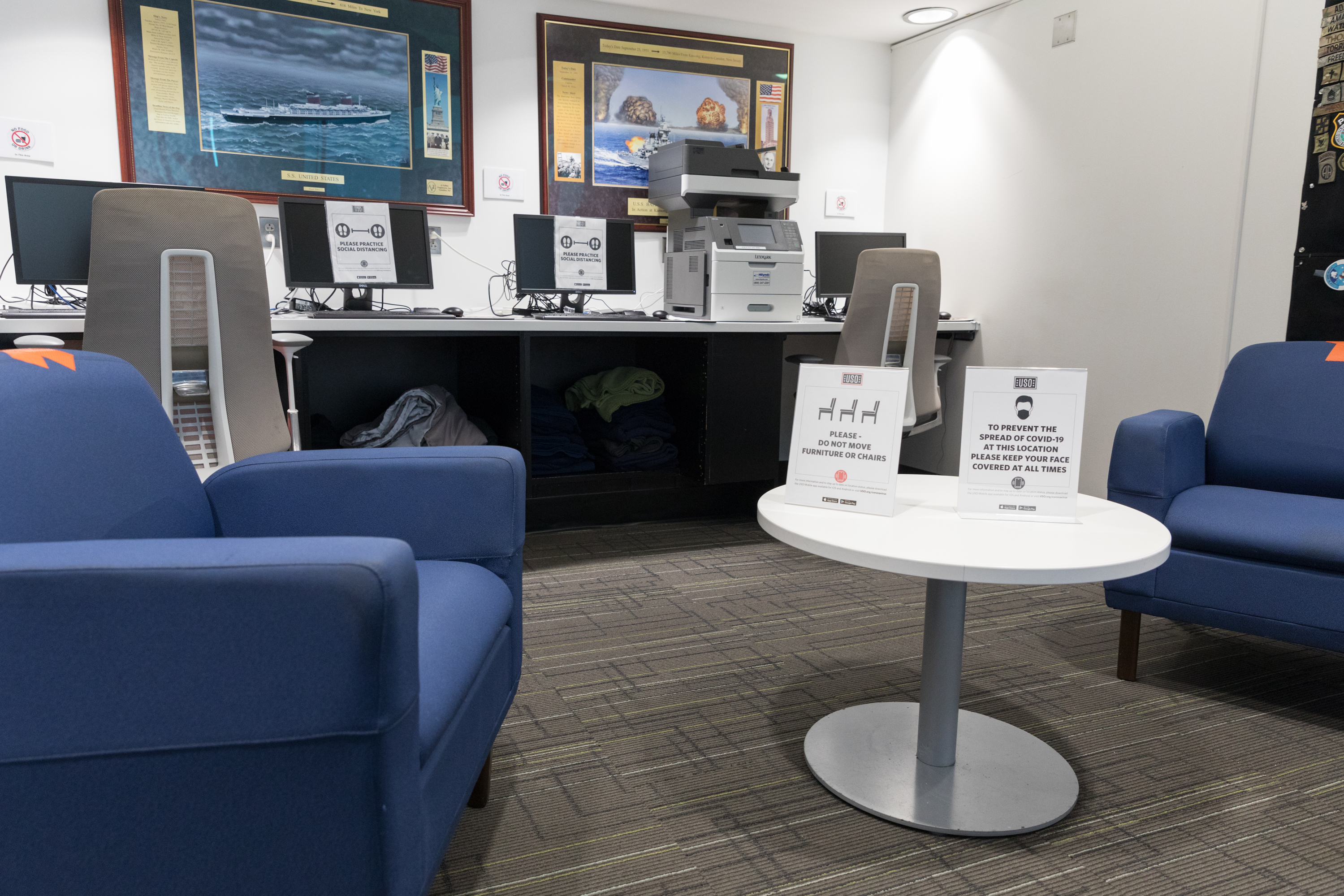
As Philadelphia International Airport (PHL) has seen more passengers traveling through, more food and retail businesses opening up and more services coming back in recent weeks following a virtual shutdown during the peak of the COVID-19 crisis, PHL was especially happy to see one member of its community open its doors agai
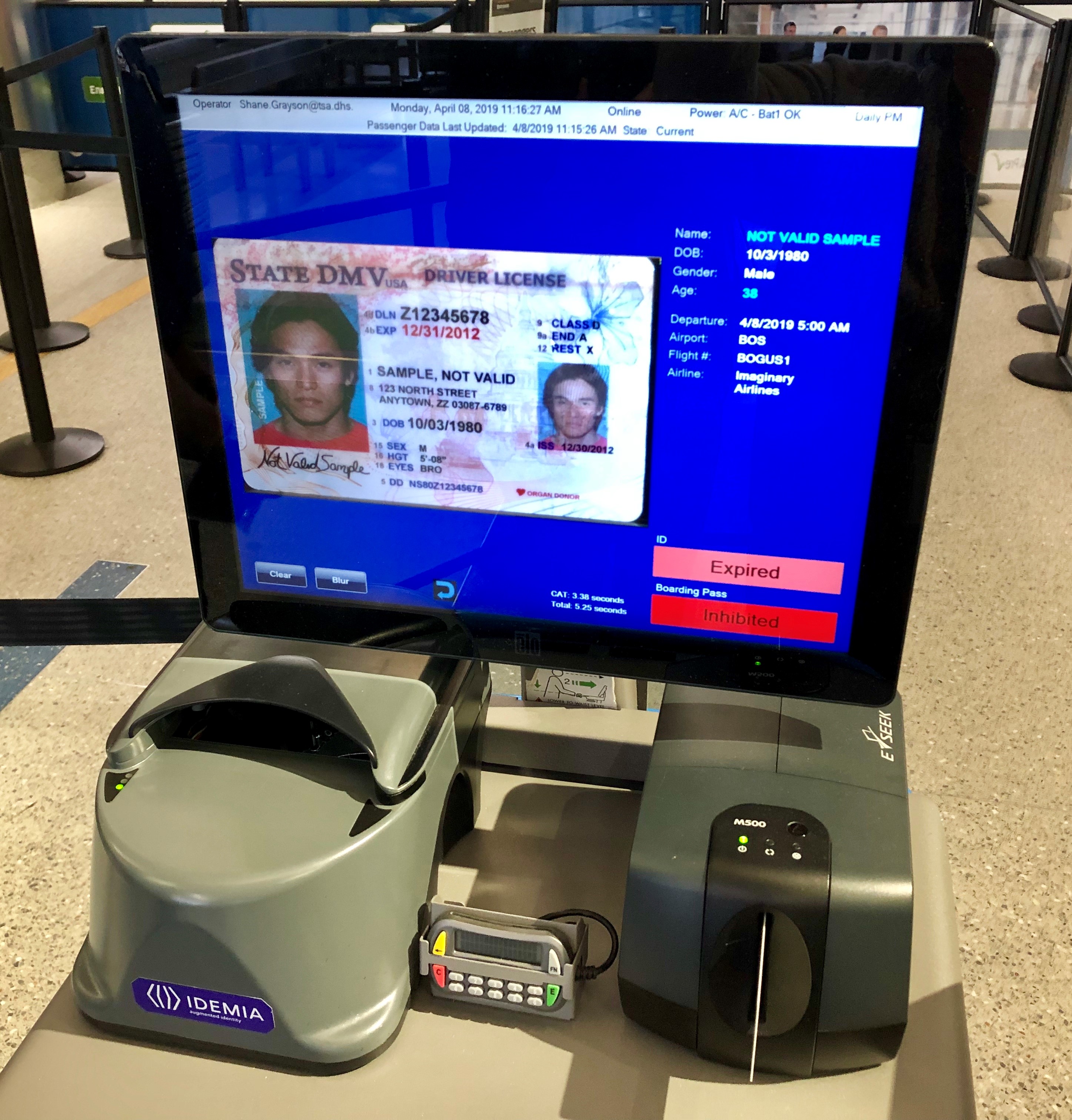
In an ongoing effort to enhance the passenger screening process, the Transportation Security Administration (TSA) officers at Philadelphia International Airport (PHL) are using Credential Authentication Technology (CAT) that validates a traveler’s identification and confirms their flight information in near real time.
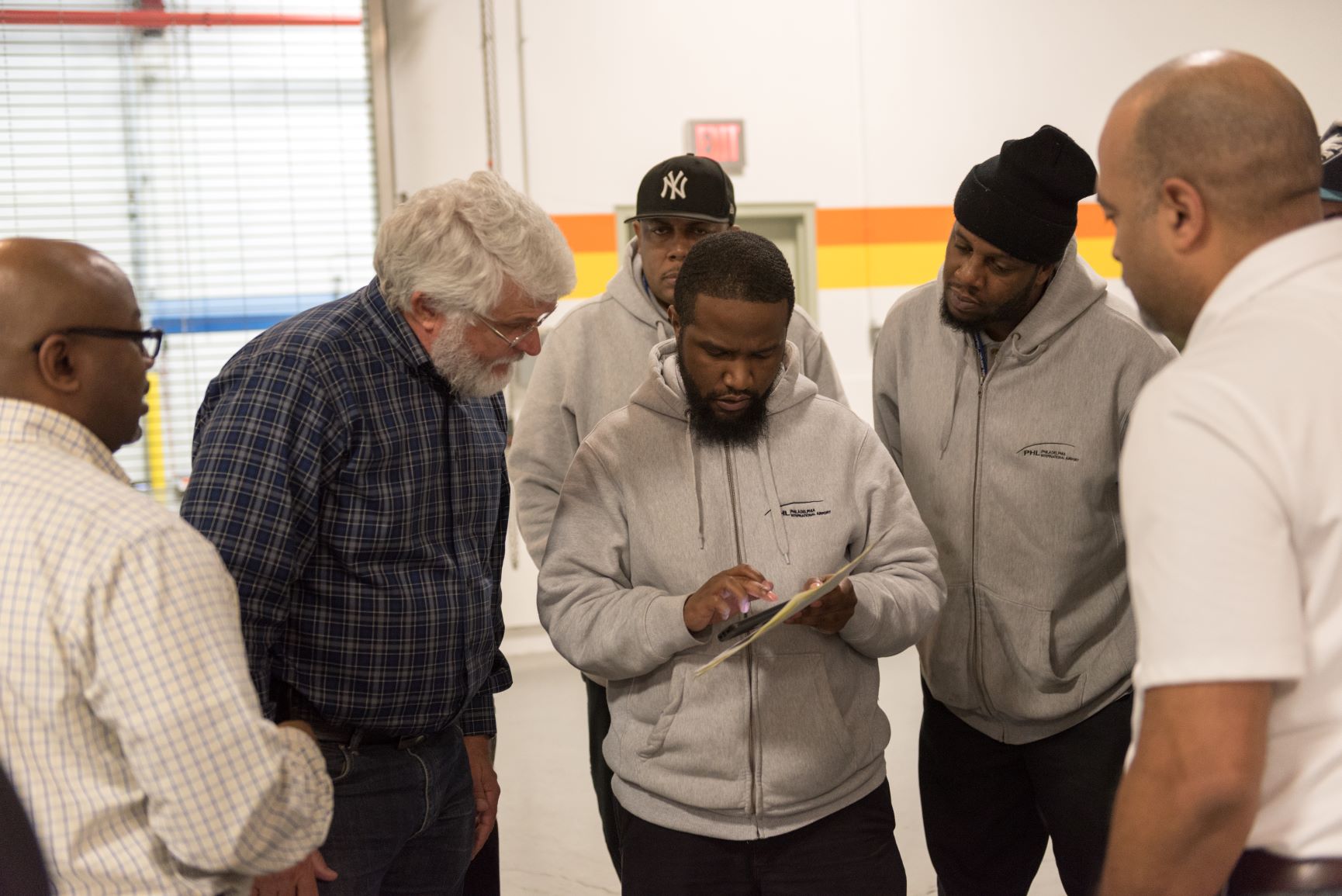
Before the City of Philadelphia Division of Aviation began rolling out Maximo – a state-of-the-art software management system – a couple of years ago, staff in the Communications Center used a very analog mechanism for documenting service requests and emergency incidents.
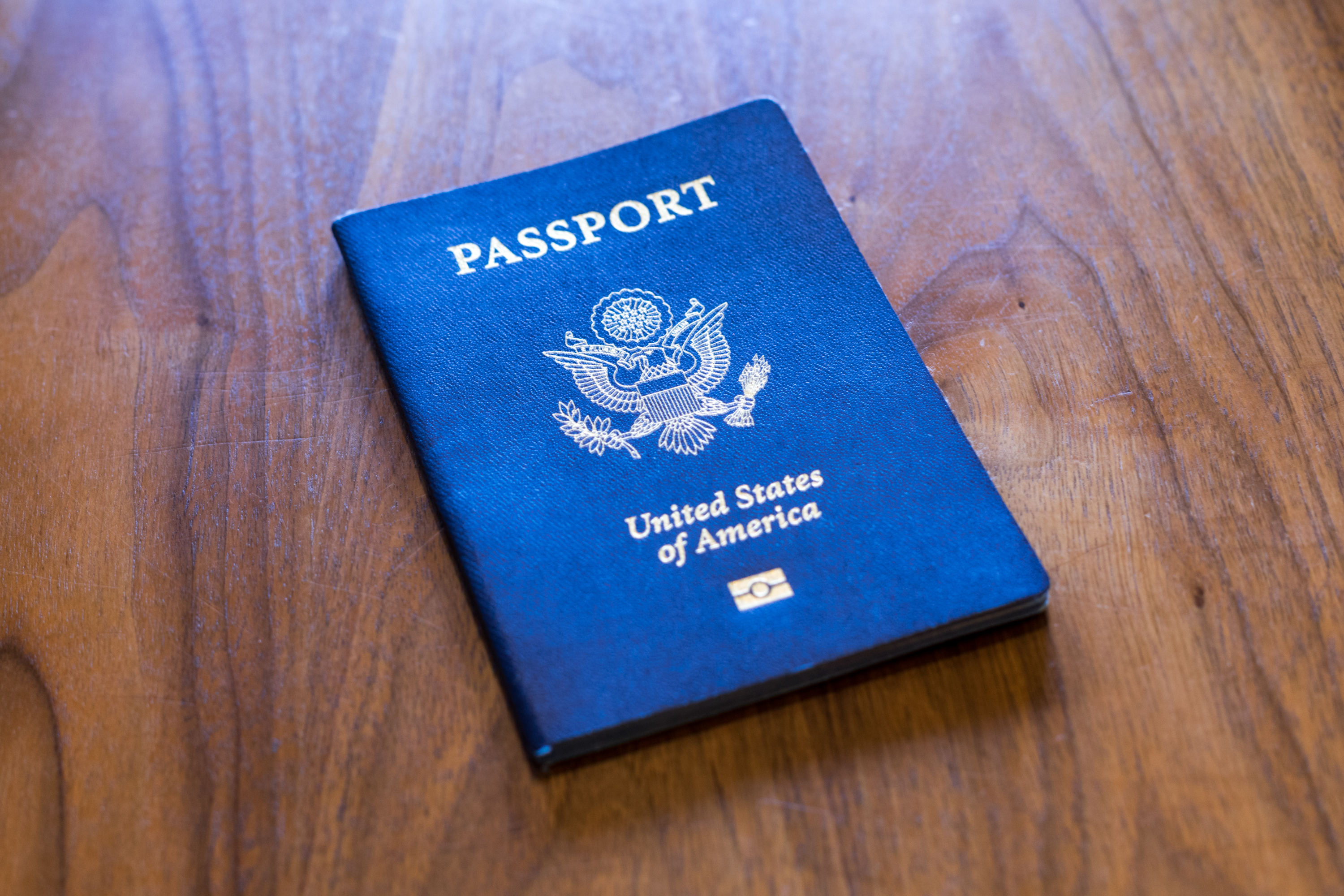
The COVID-19 pandemic’s impacts to the travel industry are well documented. In the air travel sector, at its peak in April, Philadelphia International Airport (PHL) saw a 95 percent drop in flights and passenger traffic compared to a year ago.
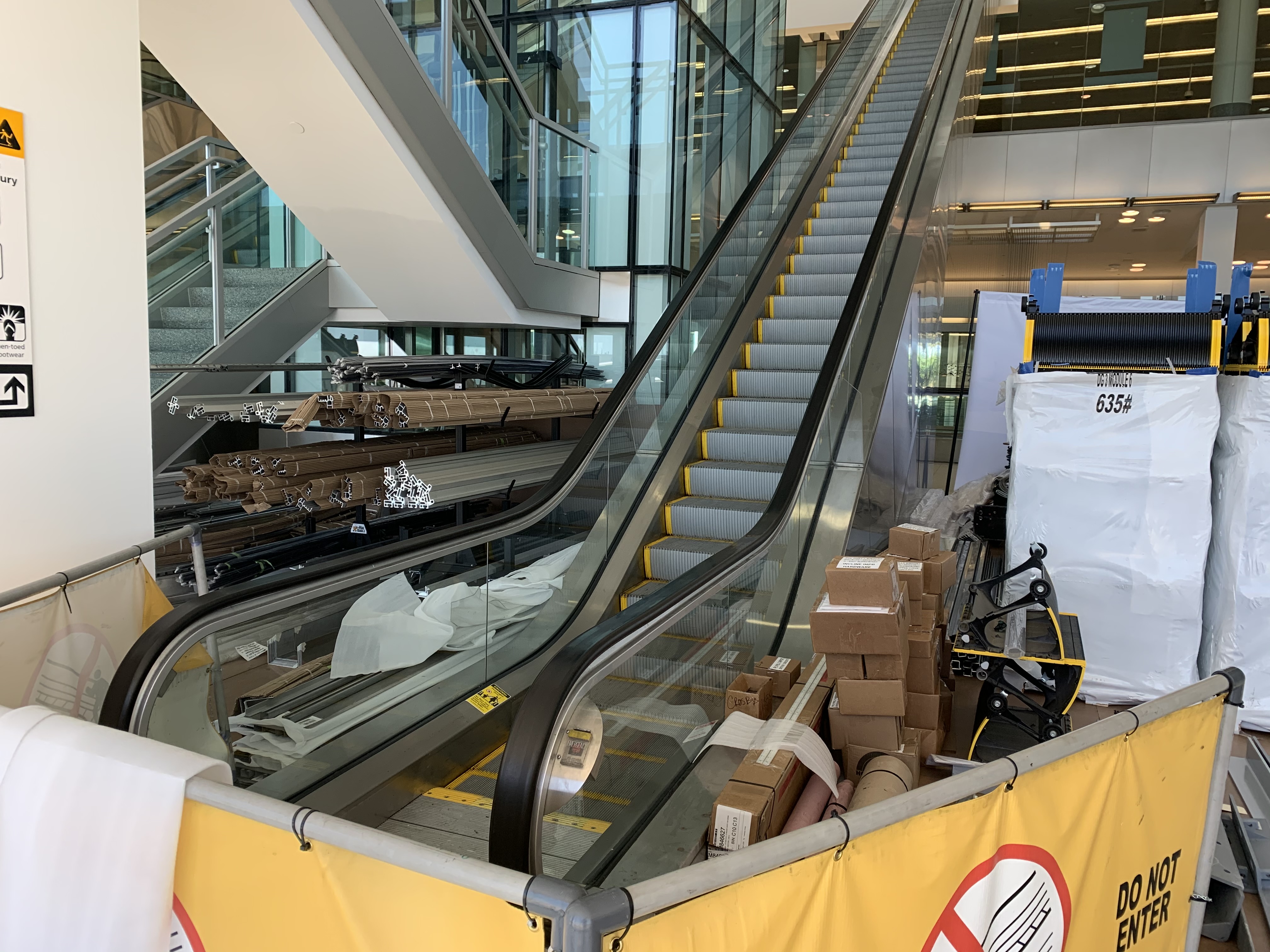
Back in March as the COVID-19 pandemic was rapidly spreading along with government-mandated shutdowns and restrictions that, among other things, turned airports into virtual ghost towns, Allan Moore recalls the strange sense of walking through Philadelphia International Airport’s deserted complex.
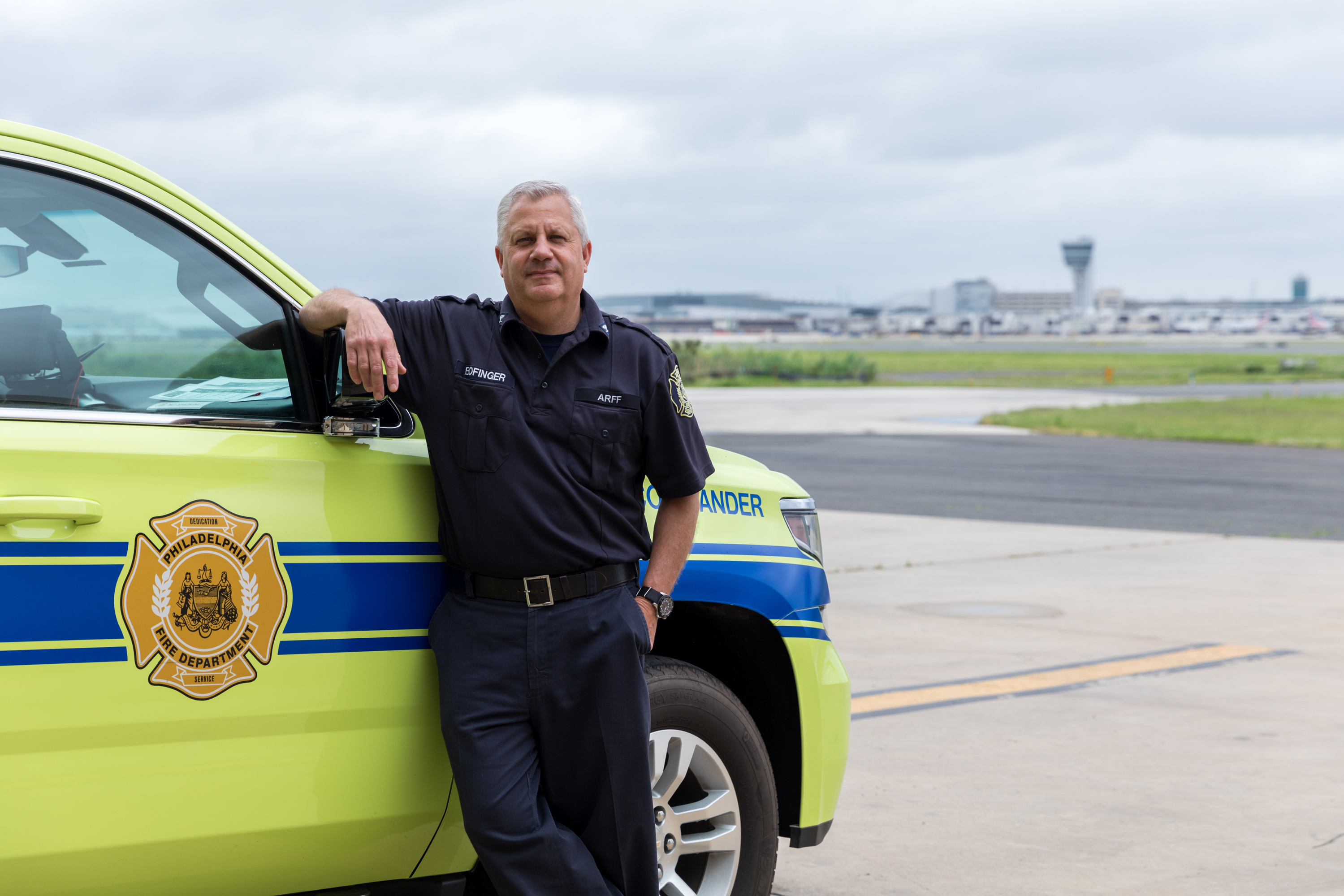
Marc Bofinger, the recently appointed Deputy Chief, Airport Operations Division of the Philadelphia Fire Department’s Engine 78, is no stranger to Philadelphia International Airport and its specialized Aircraft Rescue Fire Fighting (ARFF) unit.
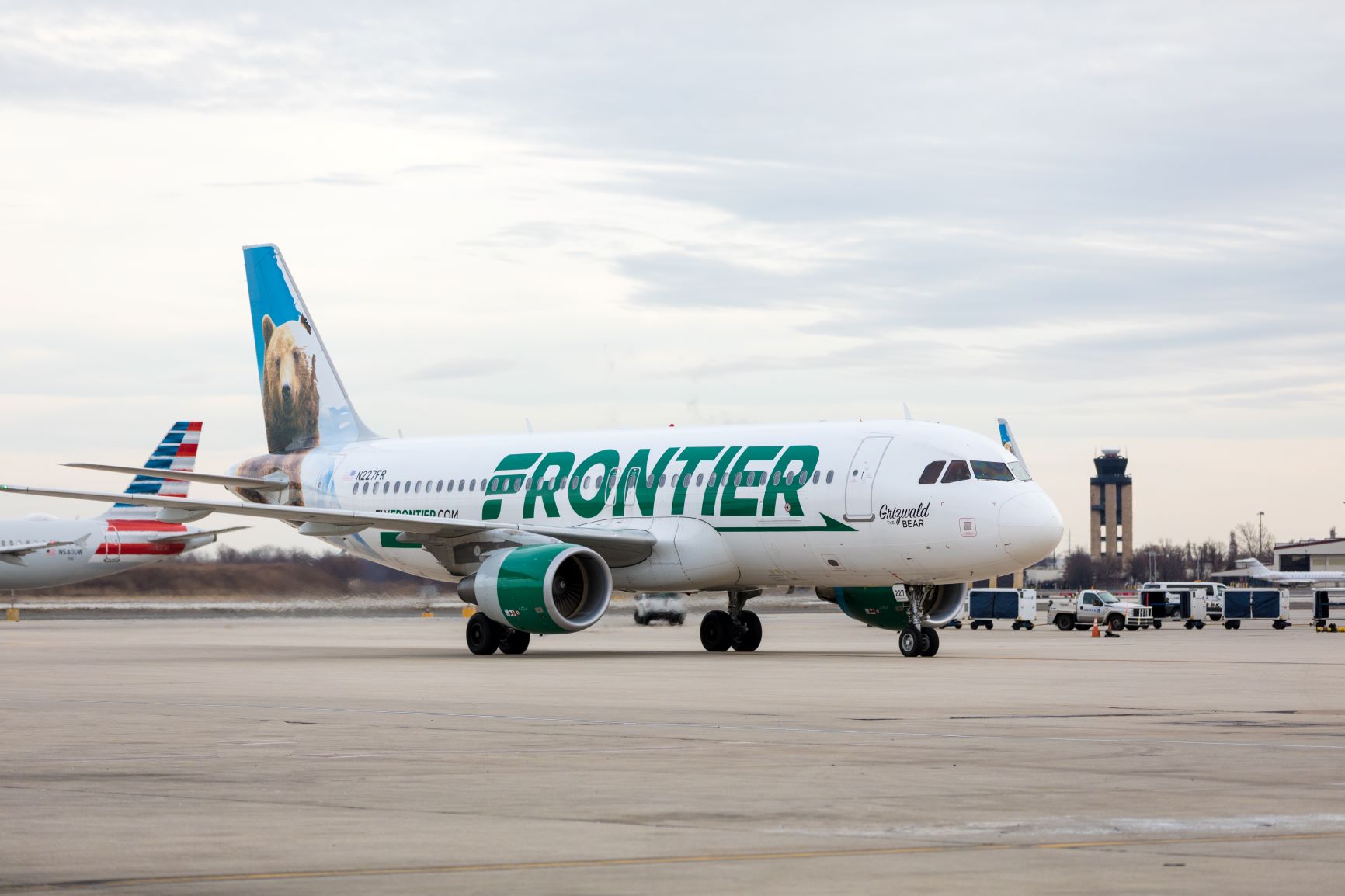
Memorial Day is the unofficial start of summer— and the kick-off of the summer vacation season. But with some travel restrictions still in place and many people tentative about flying, what will summer 2020 look like at PHL?
“Recent developments from our airline partners have made us cautiously optimistic as we move into June,” said Stephanie Wear, PHL’s Director of Air Service Development and Cargo.

The COVID-19 pandemic has changed our world in a lot of ways. Among them are unprecedented numbers of workers doing their jobs from virtual offices at home and more and more people going online for shopping, COVID-related news and information, and making charitable donations.
While the masses gravitate in greater numbers to the digital world, it appears that cyber criminals have stepped up their game.
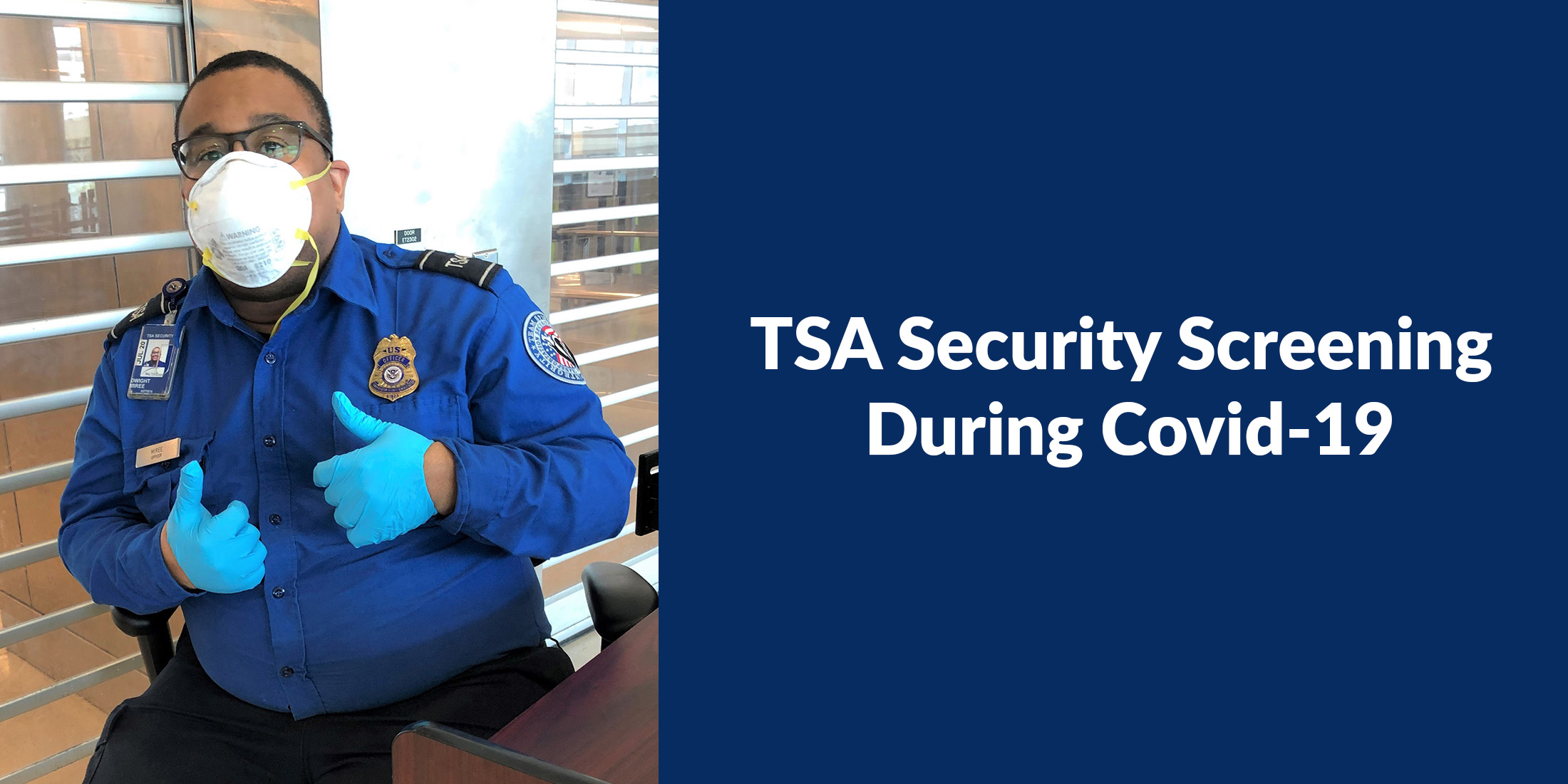
As the COVID-19 health crisis lingers into the Memorial Day weekend – the traditional start of the summer travel season – the Transportation Security Administration (TSA) has introduced changes to the security screening process that aim to reduce the potential for cross-contamination at the security checkpoint in an effort to help prevent the spread of COVID-19. TSA has already started implementation of these changes and more are slated by mid-June.
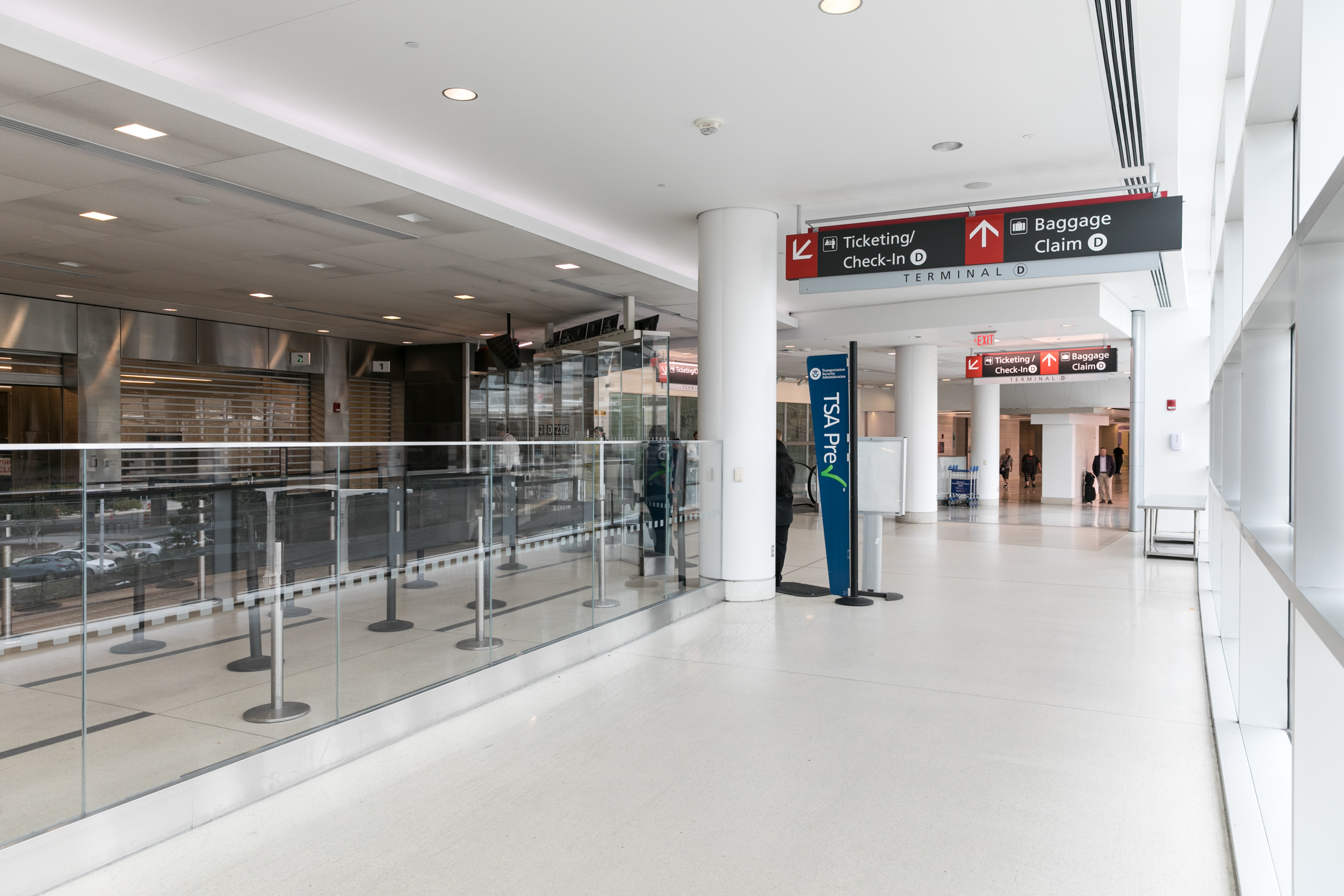
As the COVID-19 health crisis continues to impact the aviation industry, there is no timetable for when airline operations may approach pre-pandemic levels. At Philadelphia International Airport, flight ops are down about 90 percent from this time a year ago.
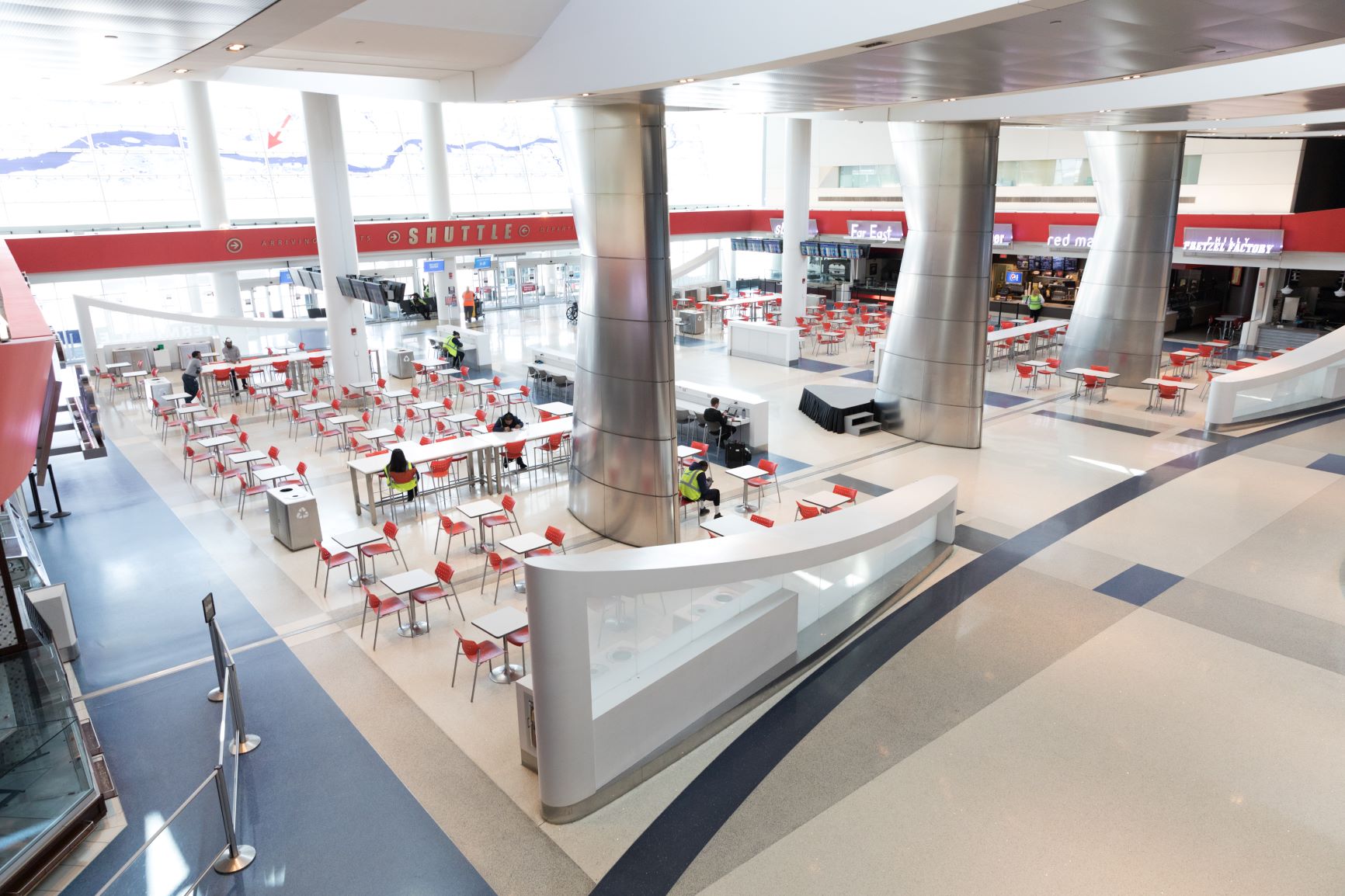
Beginning May 22, access to Philadelphia International Airport’s facilities will be limited to those with airport business, including badged employees, ticketed passengers and people who are transporting those with airport business.
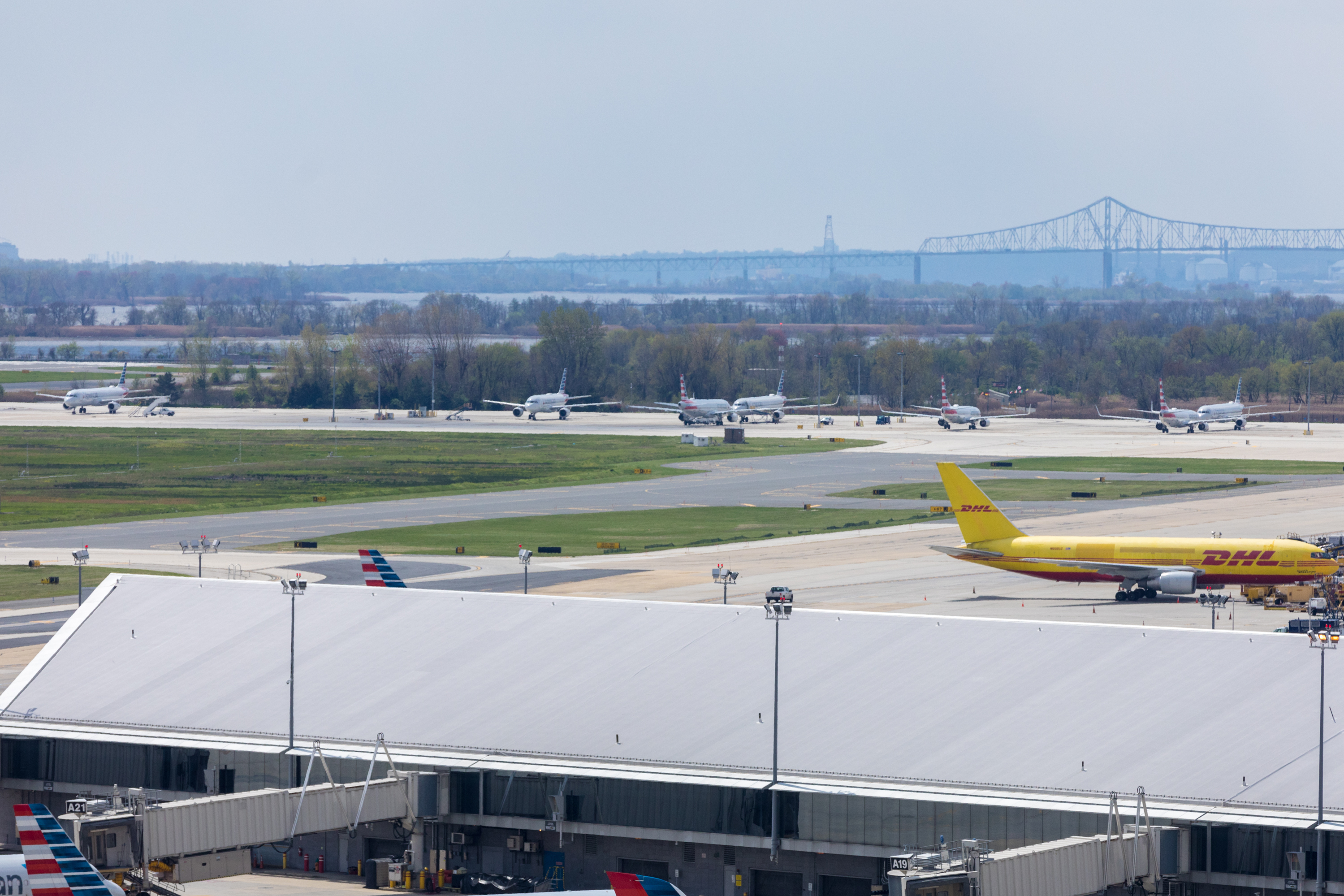
It’s mid-April and any threat of winter weather – even the very rare early spring occurrence -- in Philadelphia is past. So, what are planes doing on the deicing pad at the far west end of the airfield at Philadelphia International Airport, an area that usually sees activity in the winter months with aircraft lined up to be bathed in fluid to clear them of ice before take-off?

For those who are traveling through airports during the COVID-19 health crisis, the Transportation Security Administration (TSA) has important information and things you should know before passing through the screening process.
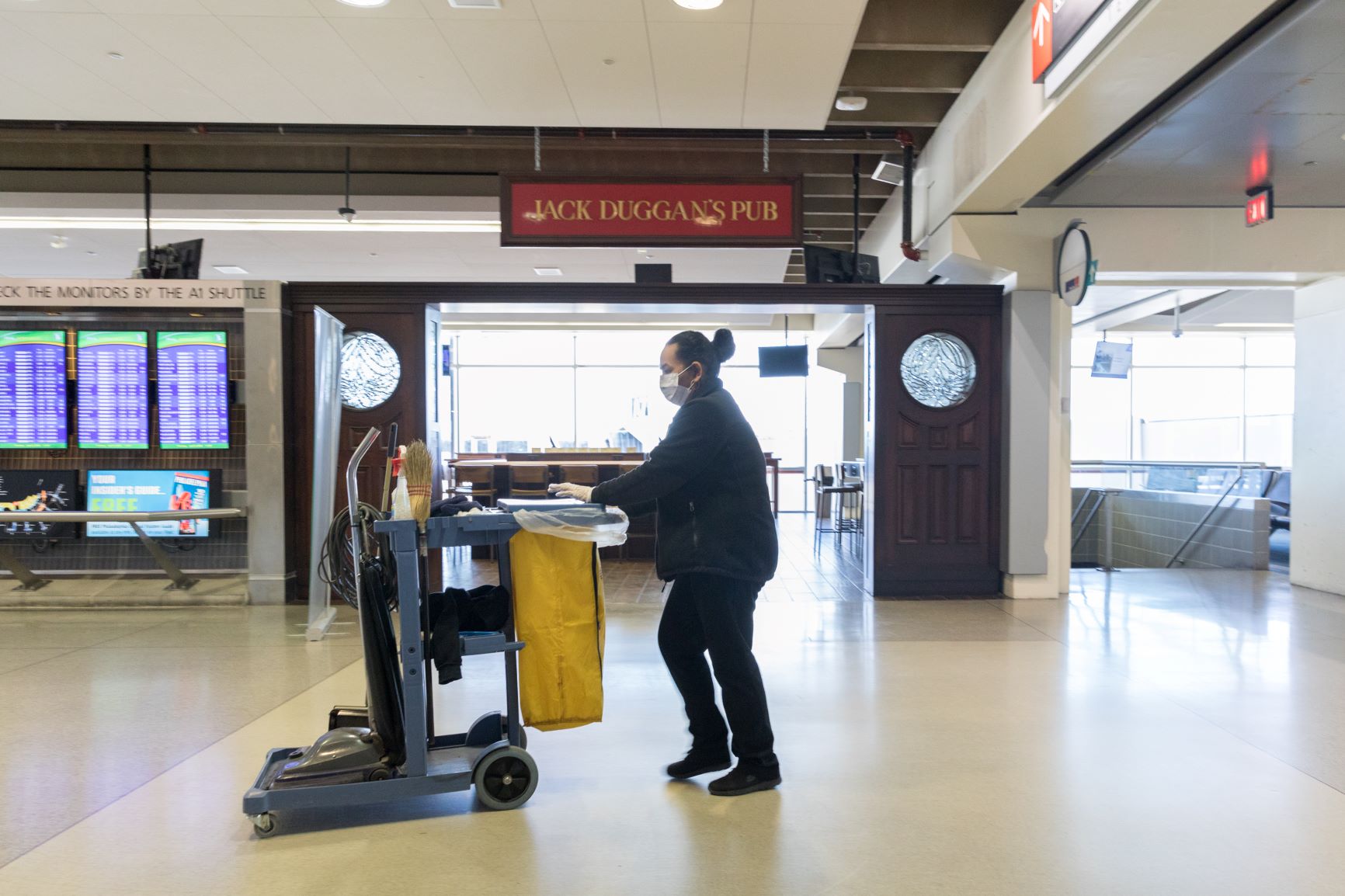
Not only does an airport’s custodial team clean up after thousands of passengers every day, they lead the facility’s infectious disease prevention efforts, too. During this period of reduced passenger volume due to COVID-19 travel restrictions, PHL’s custodians are working even harder to keep passengers, colleagues and themselves safe.

Airports have a very different feel this spring. Instead of bustling with travelers heading off for vacation or family holiday celebrations, terminals are empty while passengers follow important Stay at Home orders to fight the coronavirus pandemic.
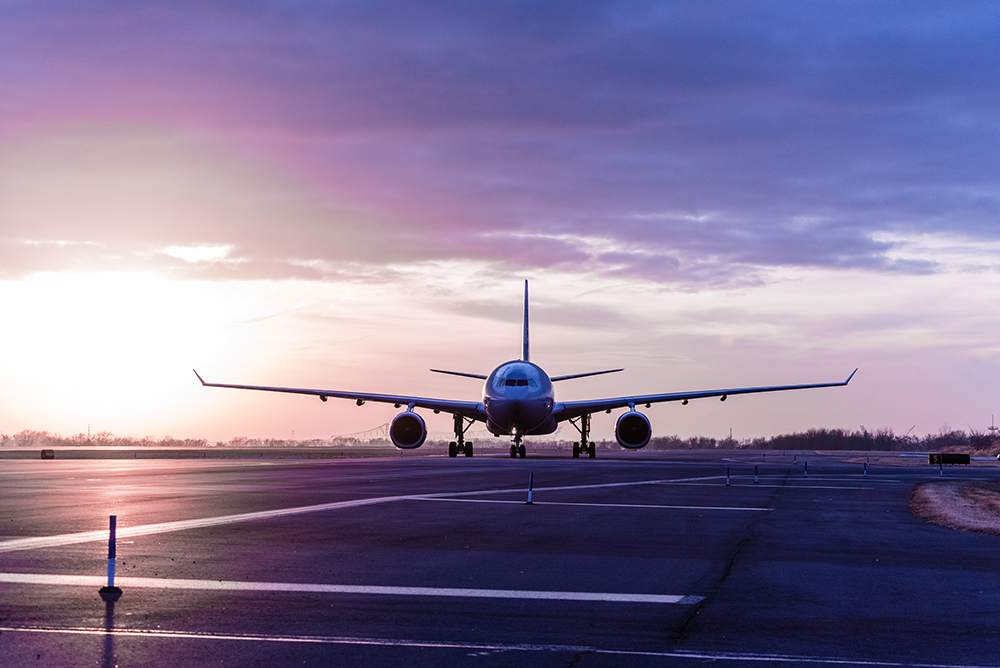
On January 21, PHL implemented a 45-day pilot of biometric screening technologies at three international gates to help U.S. Customs and Border Protection process departing passengers. Biometric screening is designed to verify travelers' identities by cross-checking facial scans with photos already on file with the federal government. CBP also has been mandated by federal law to use biometric exit screenings for foreign nationals.
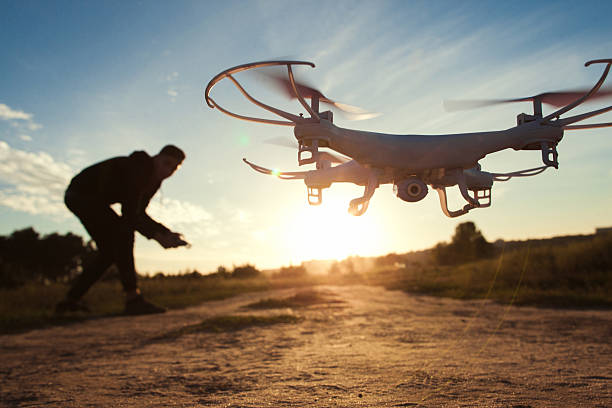
As the Unmanned Aircraft Bill goes before parliament for a second reading, the British Airline Pilots Association (BALPA) says new European research backs its concerns that the number of drone flights in controlled airspace is being underestimated.





